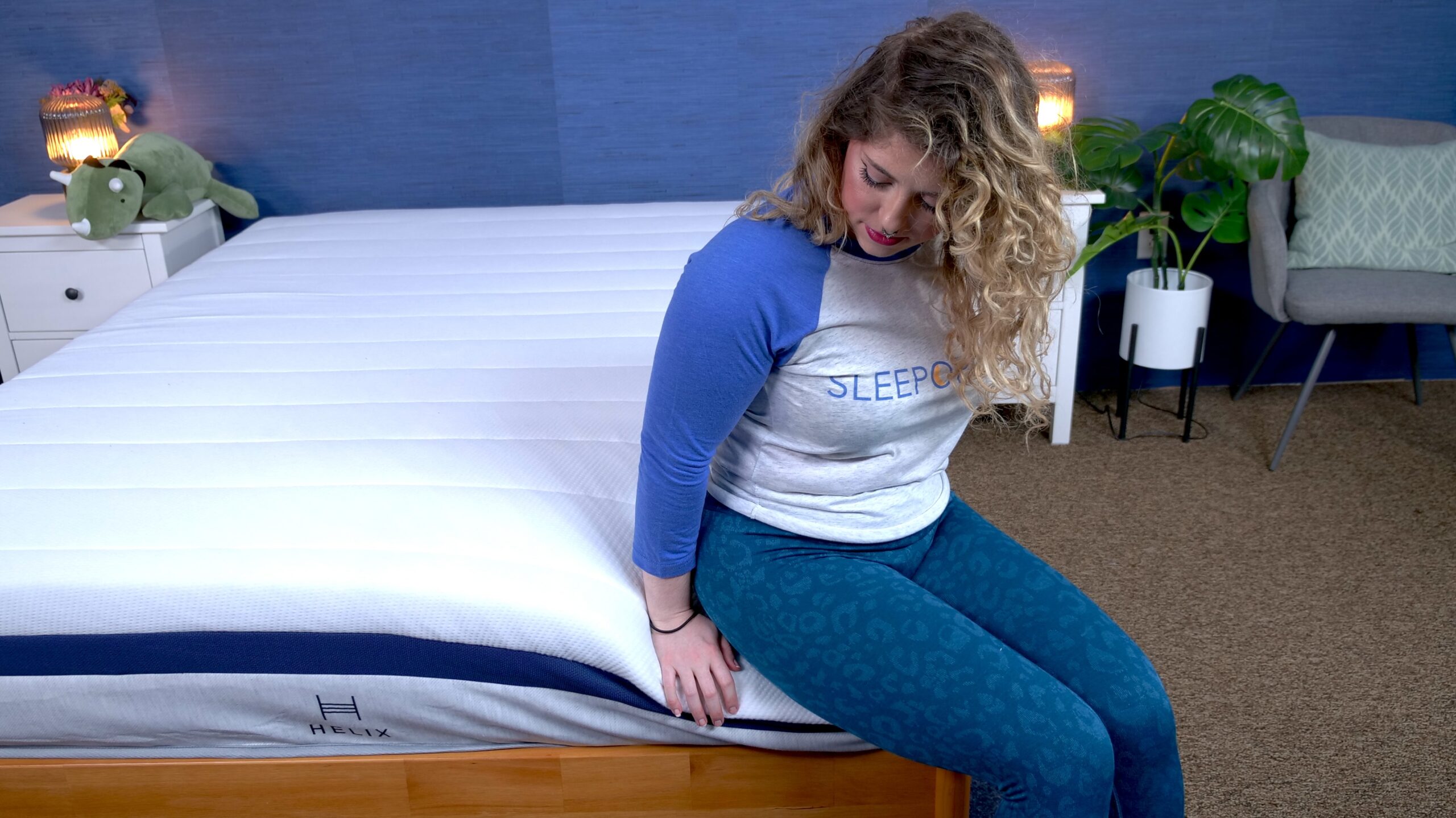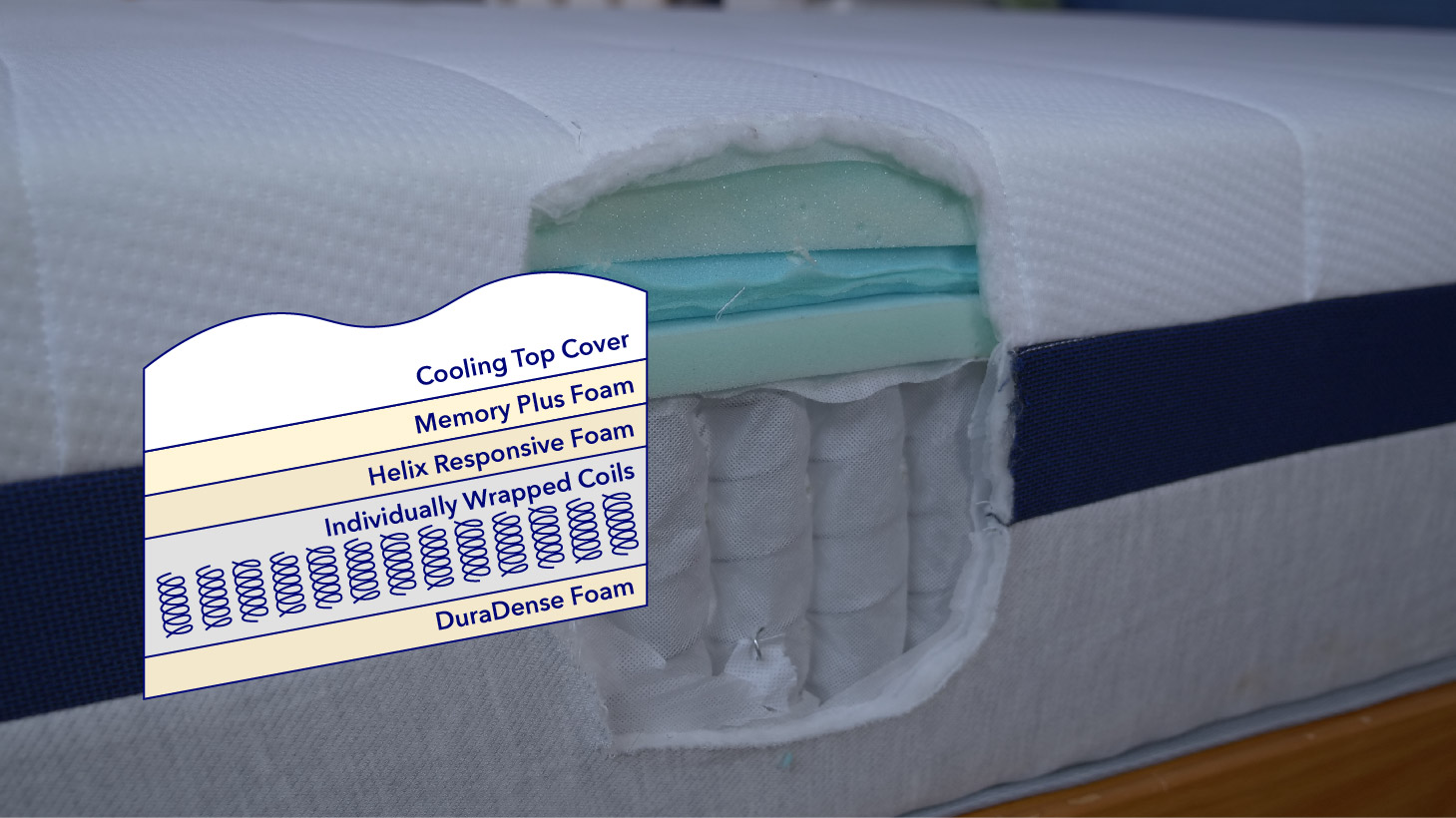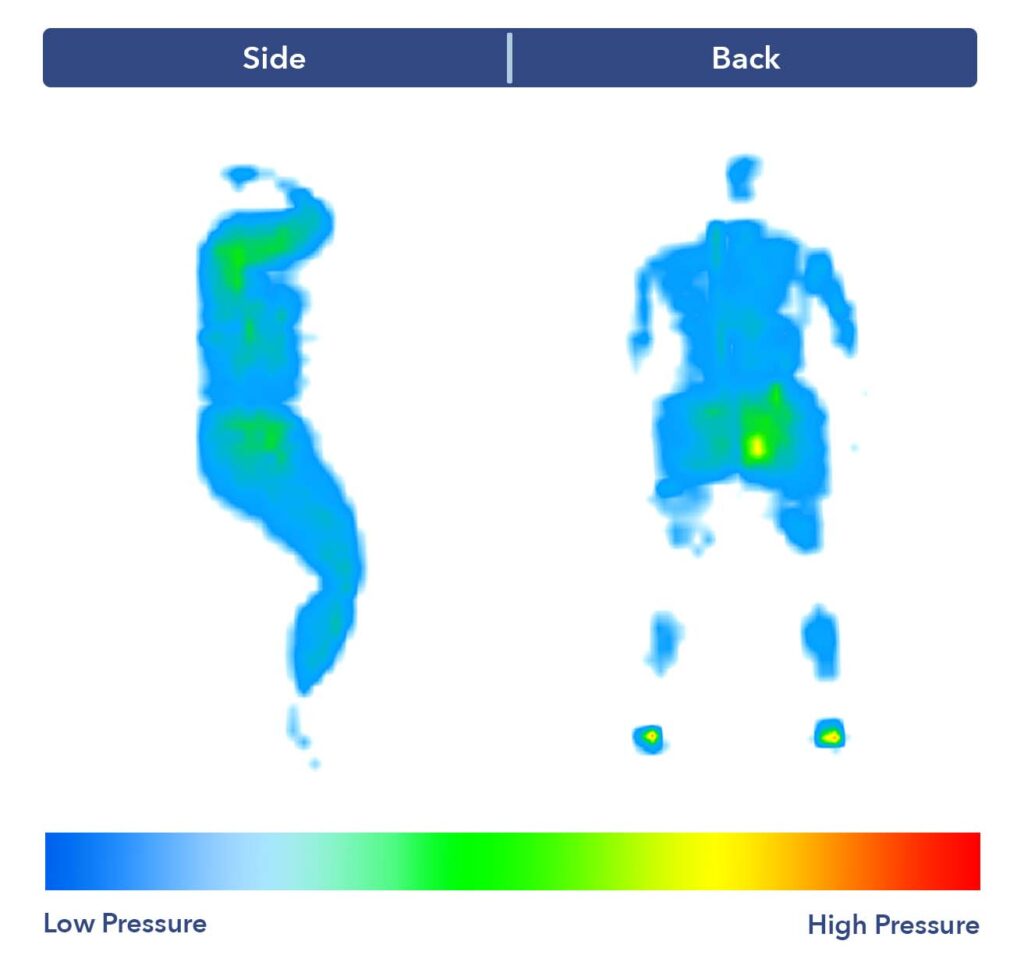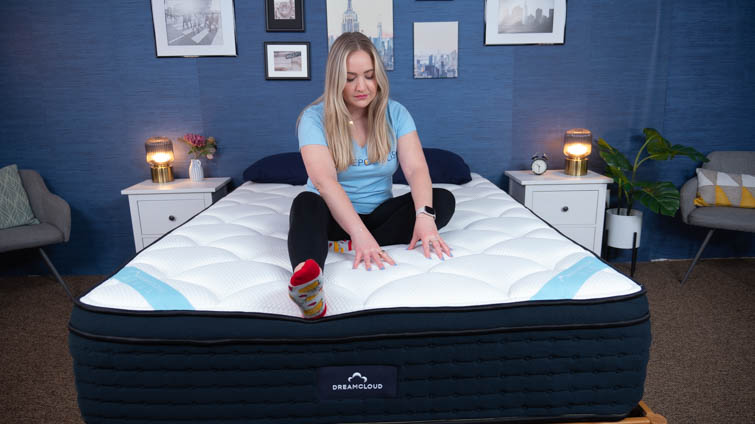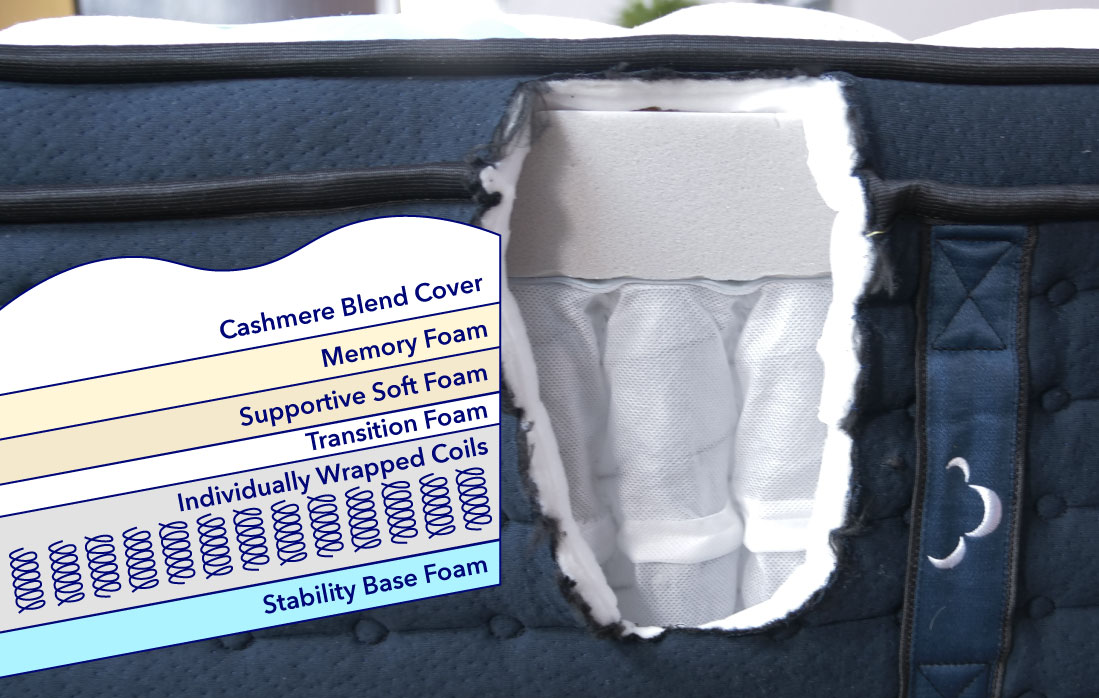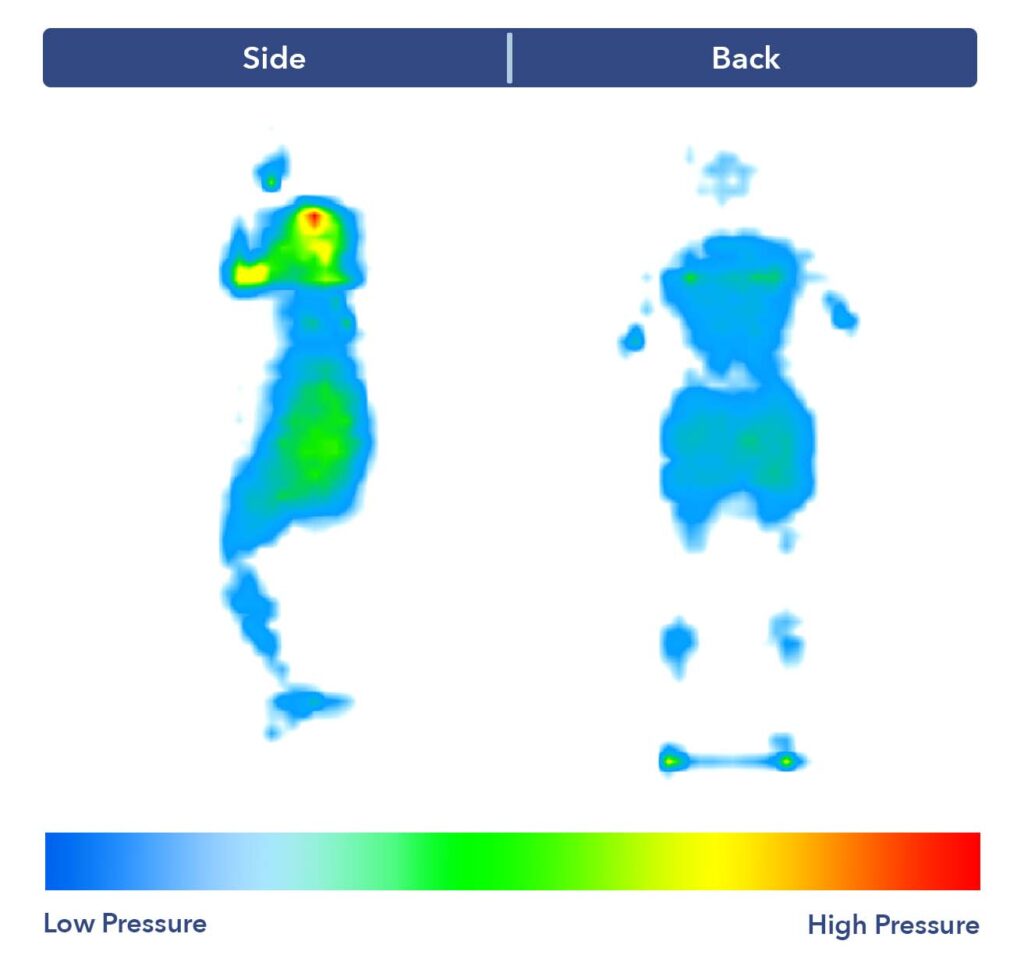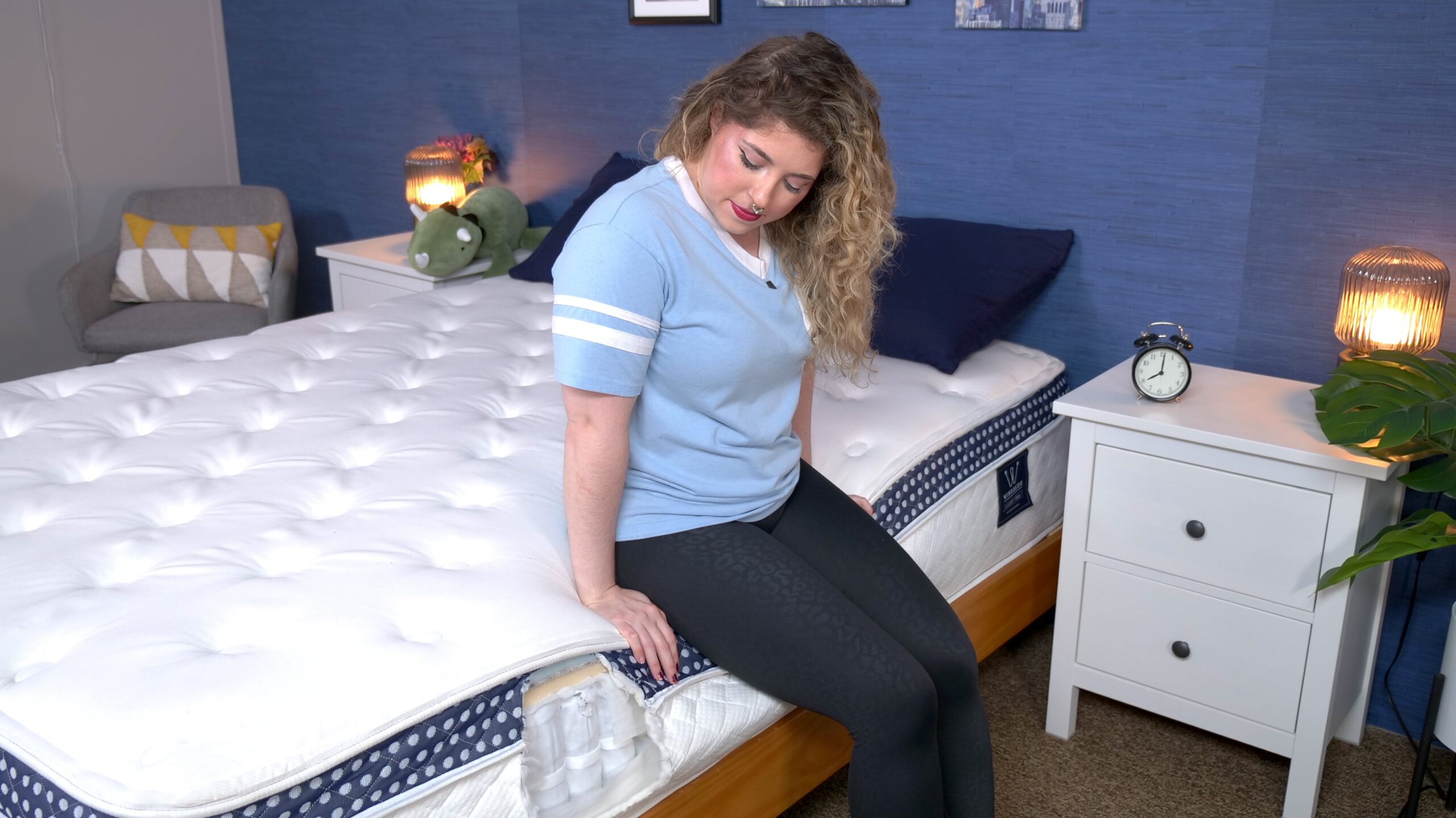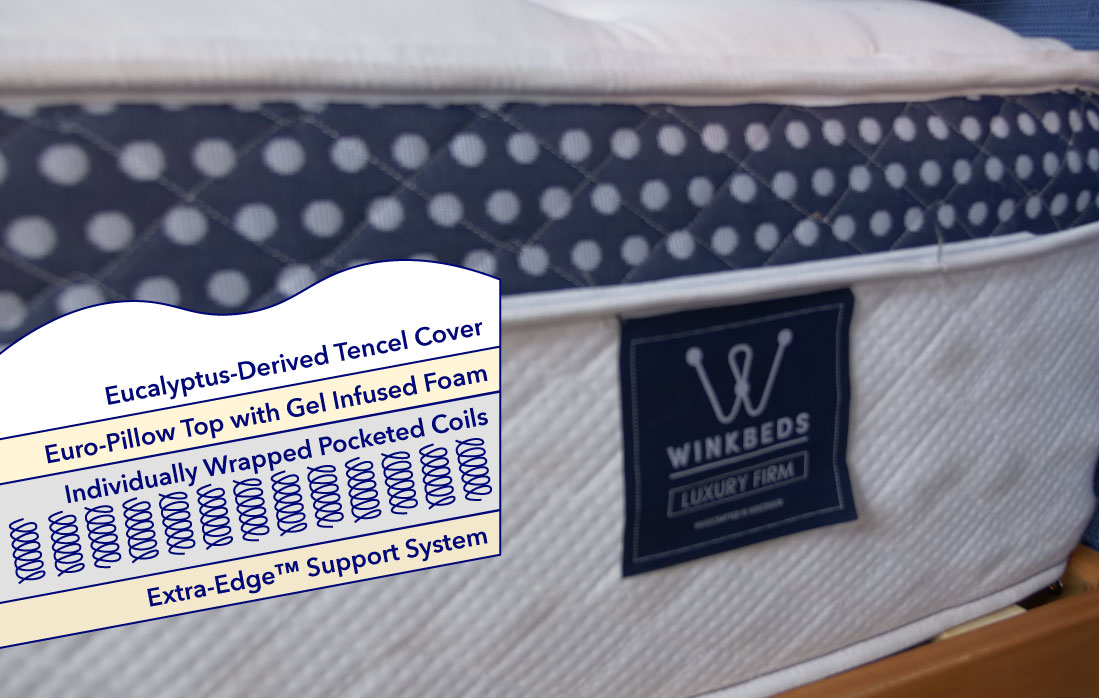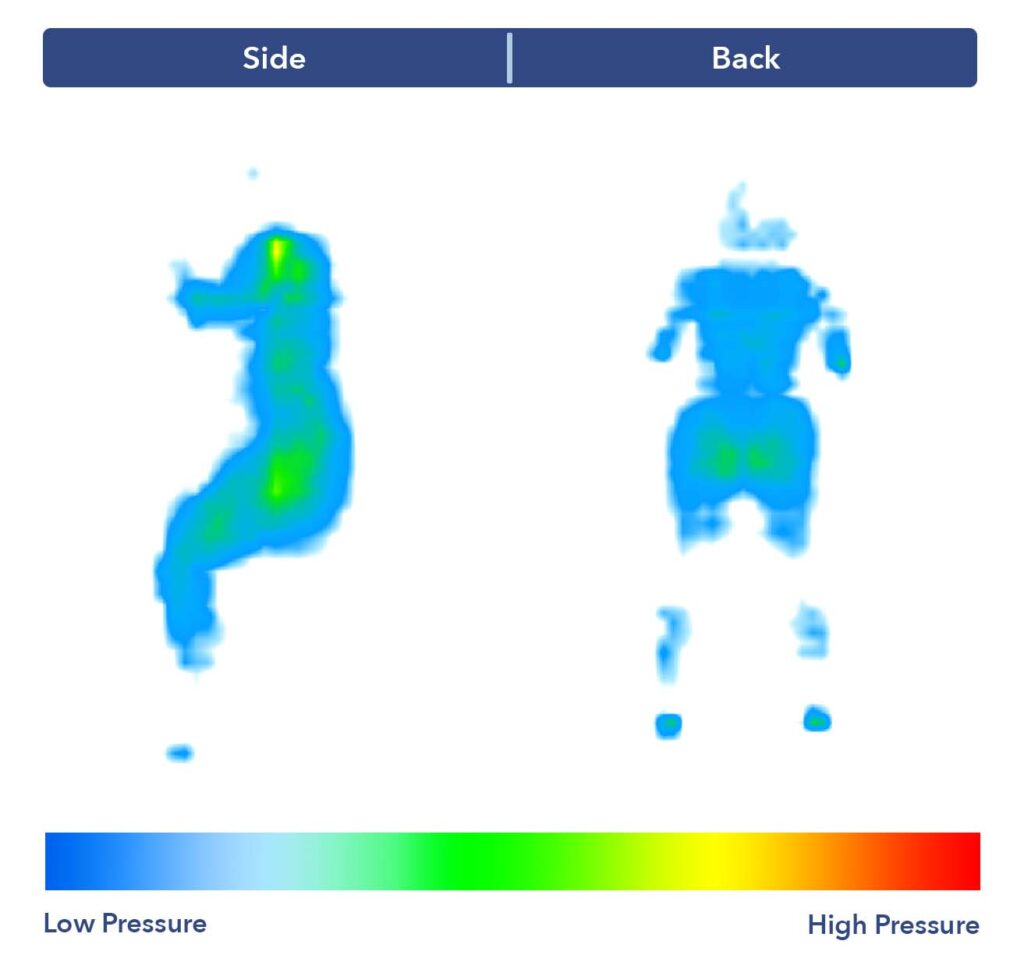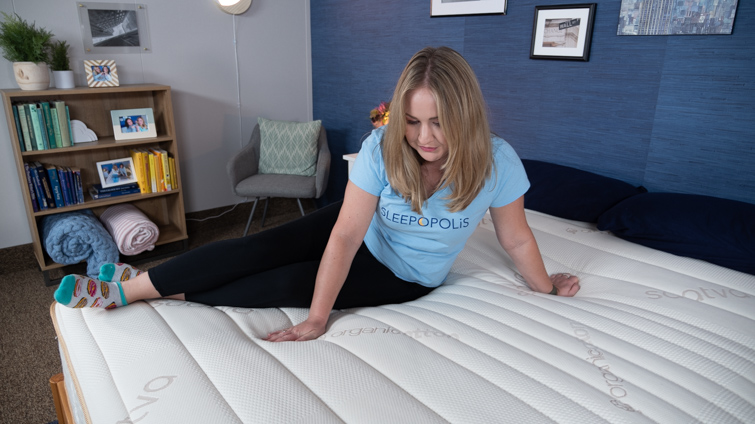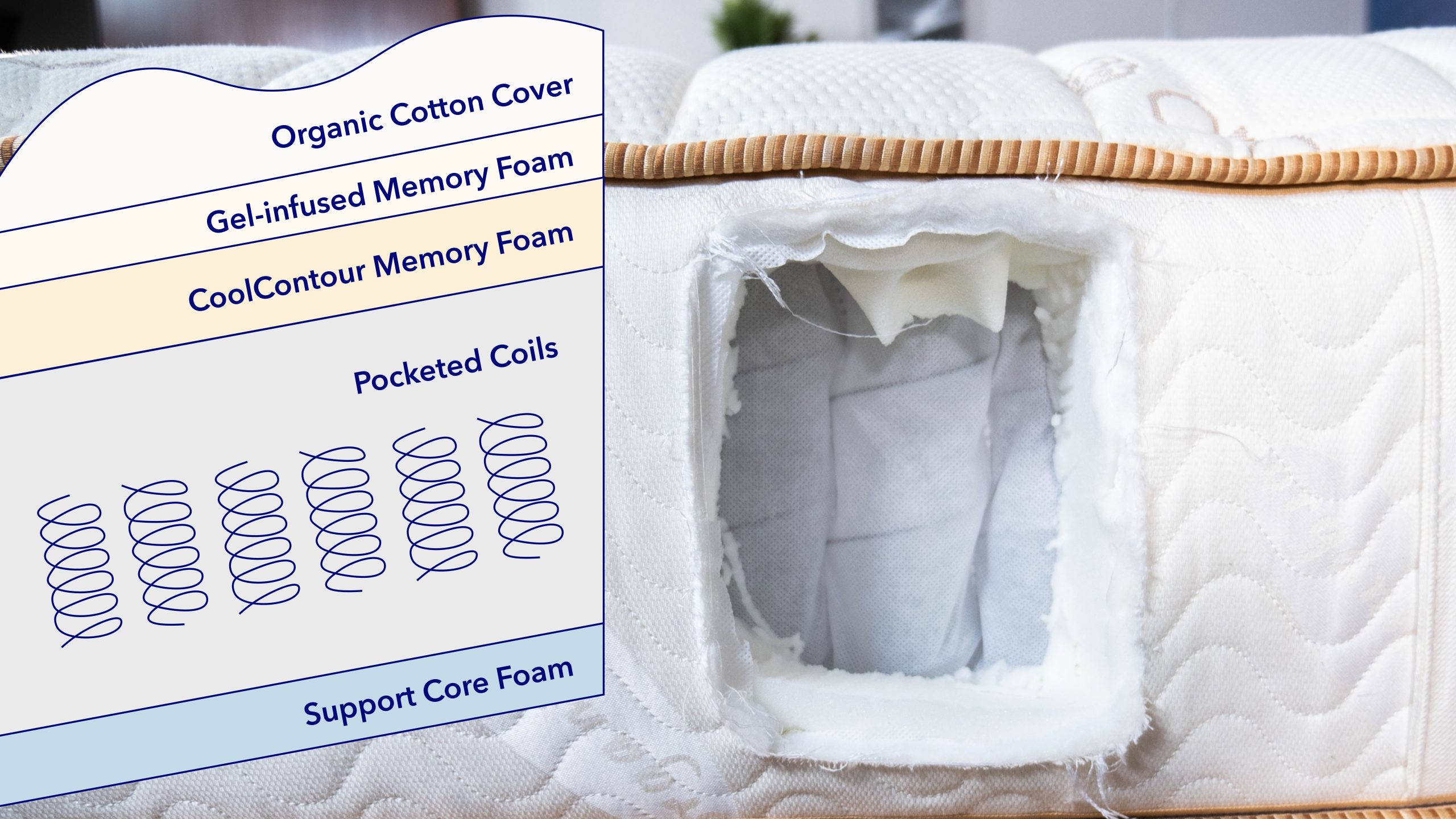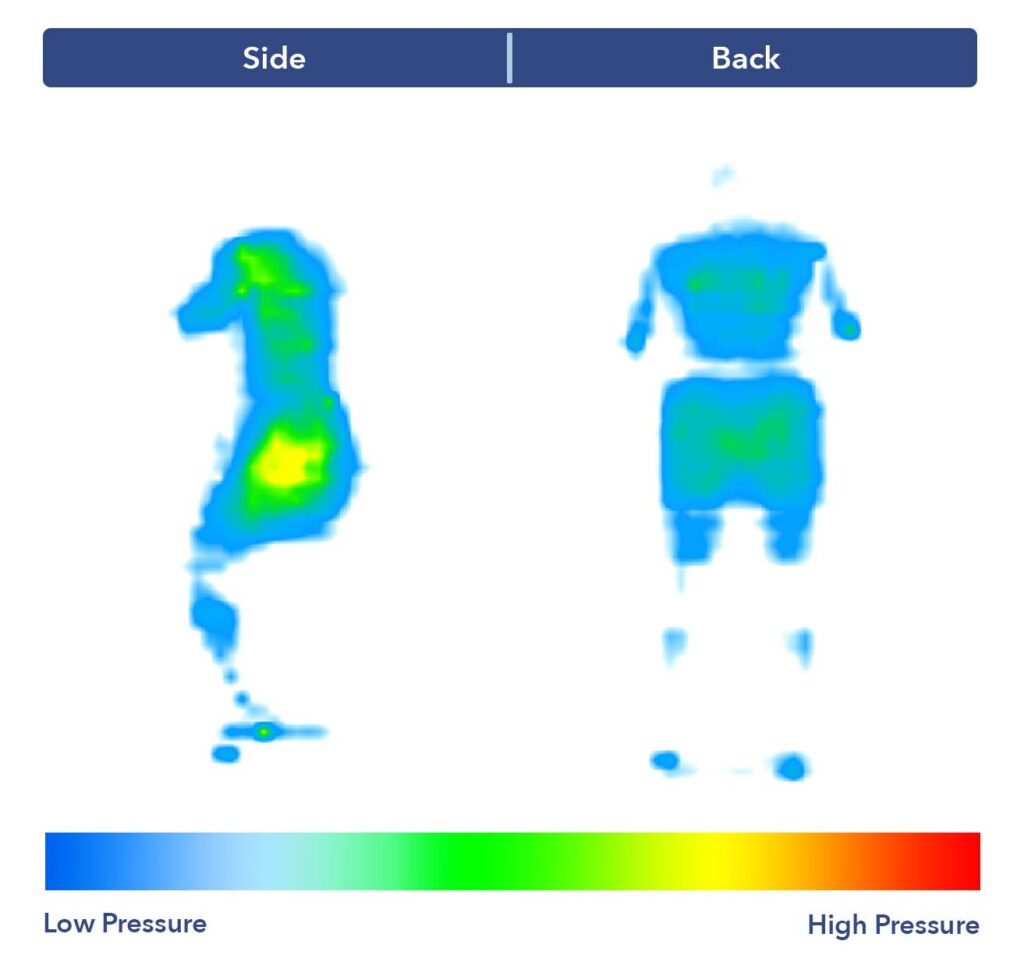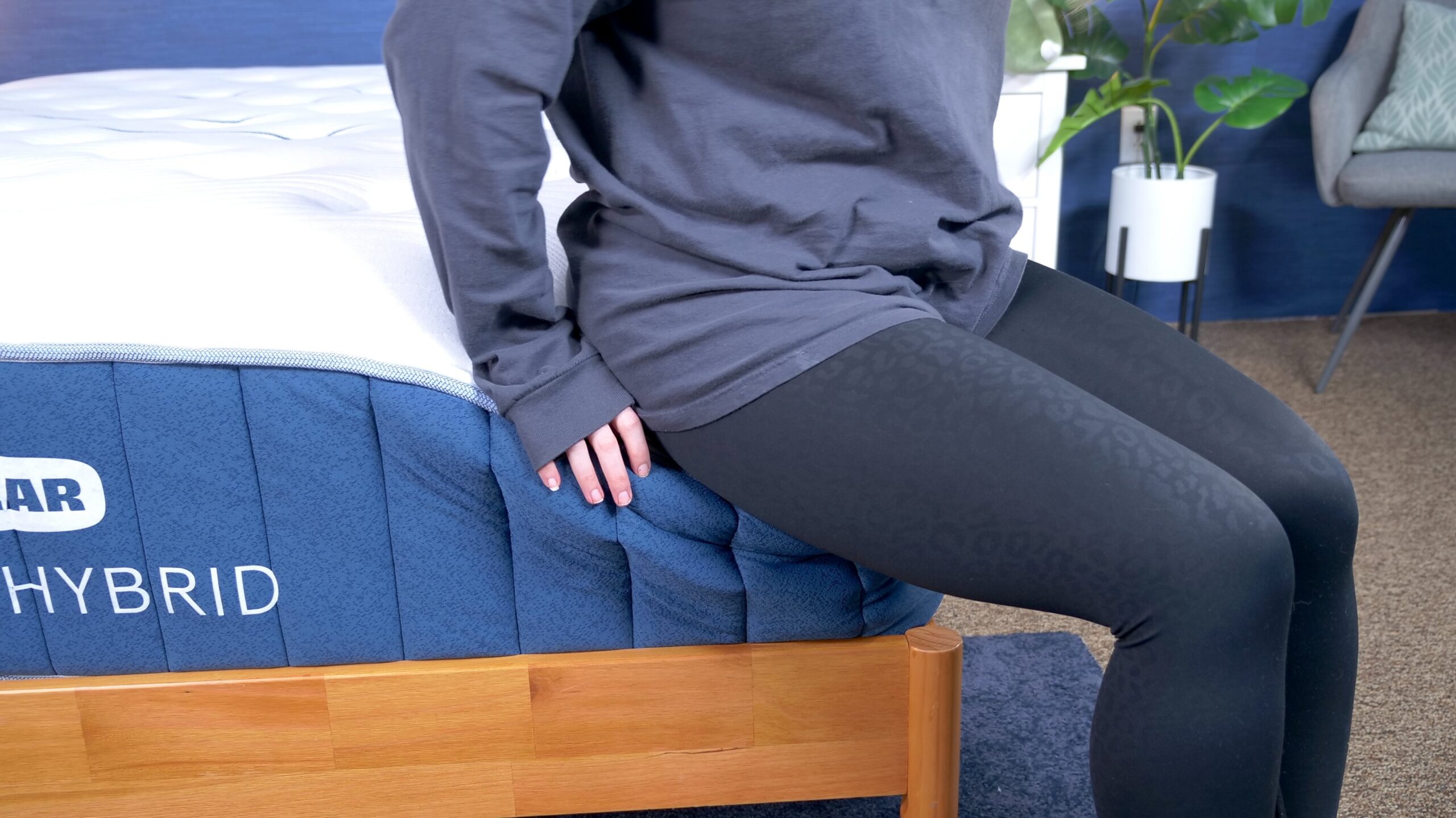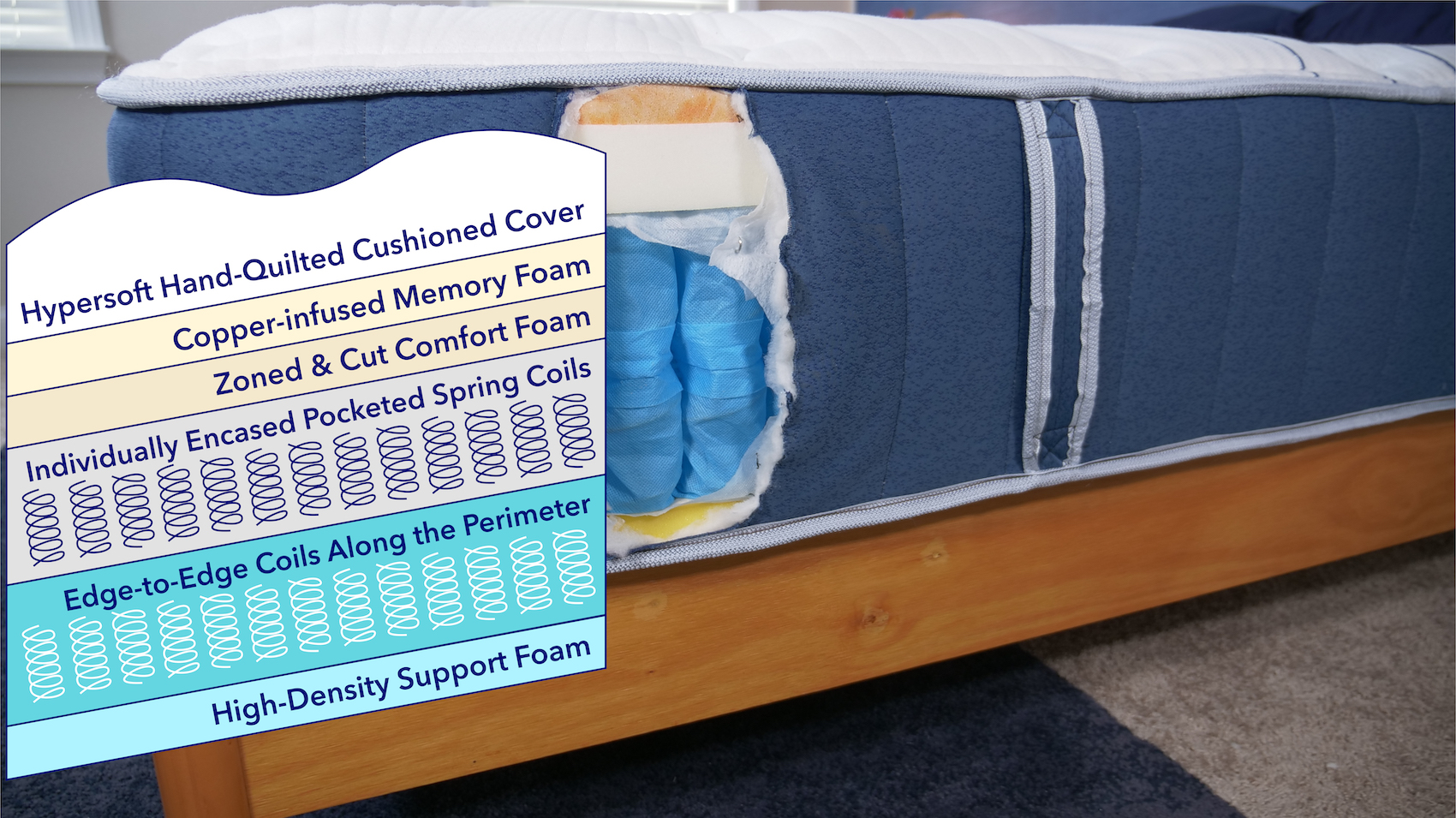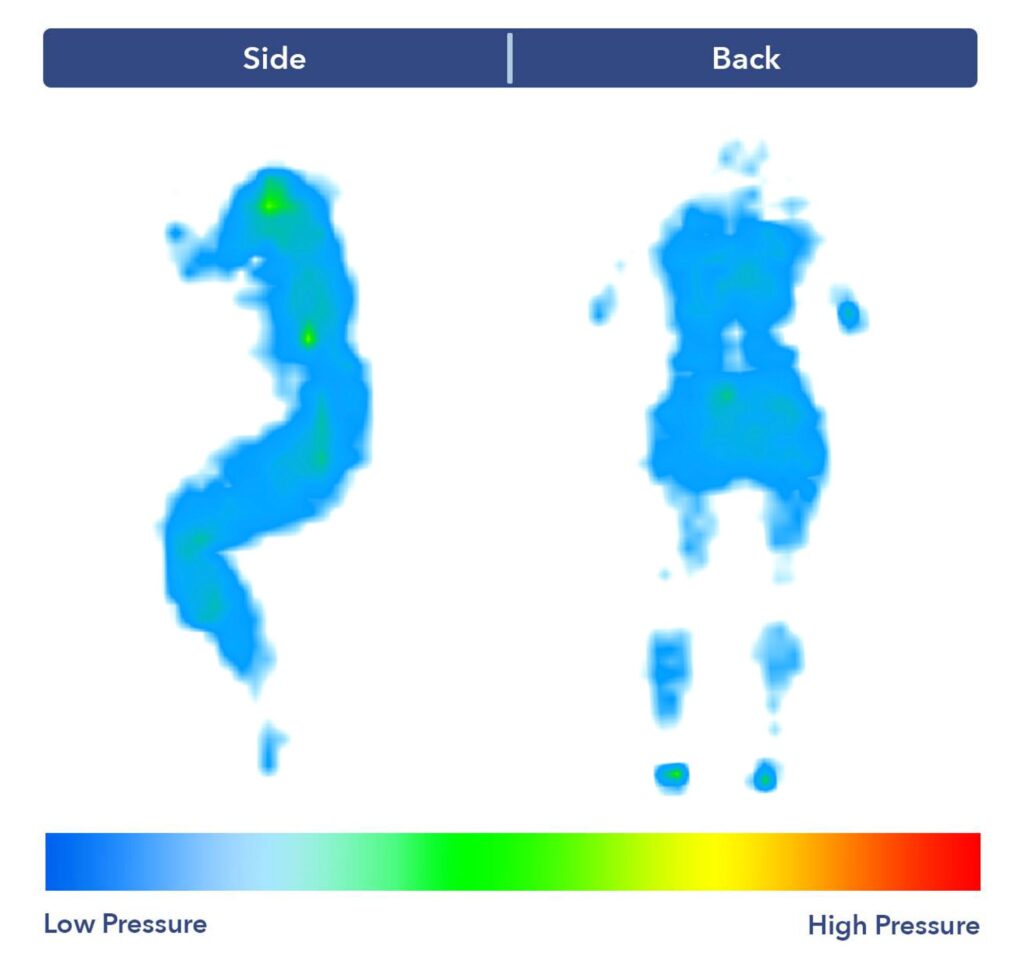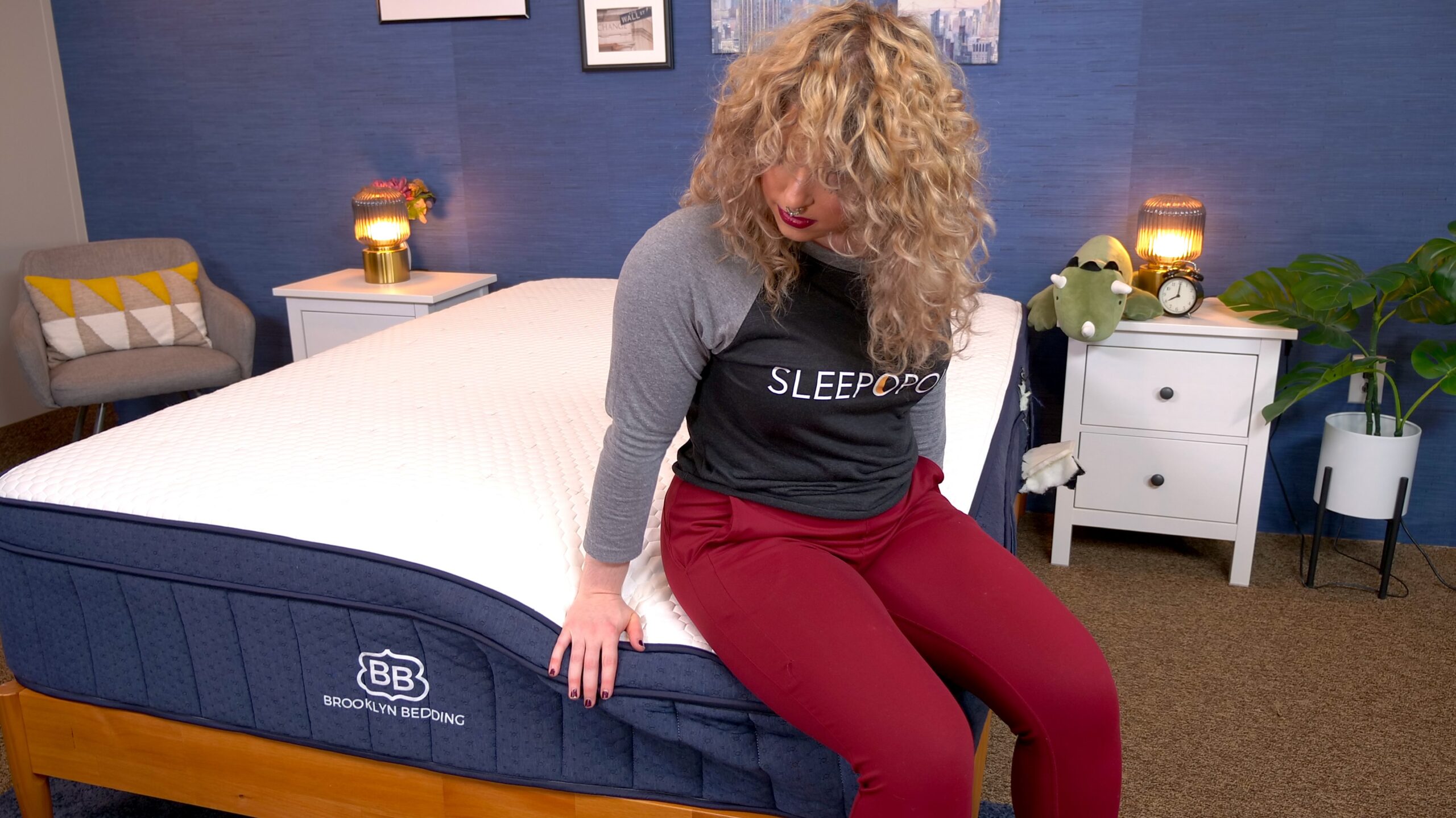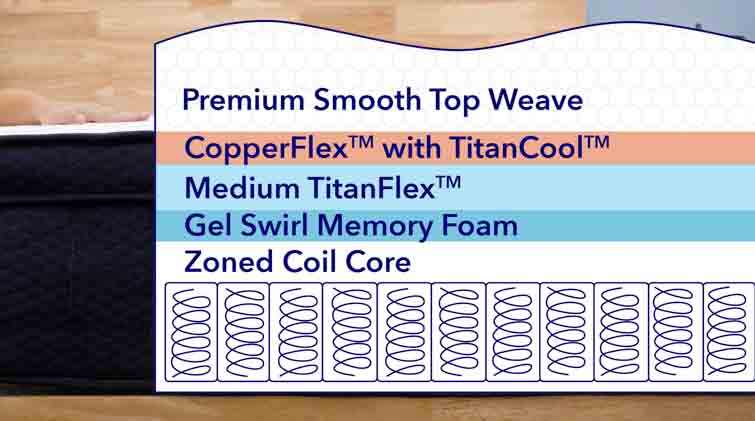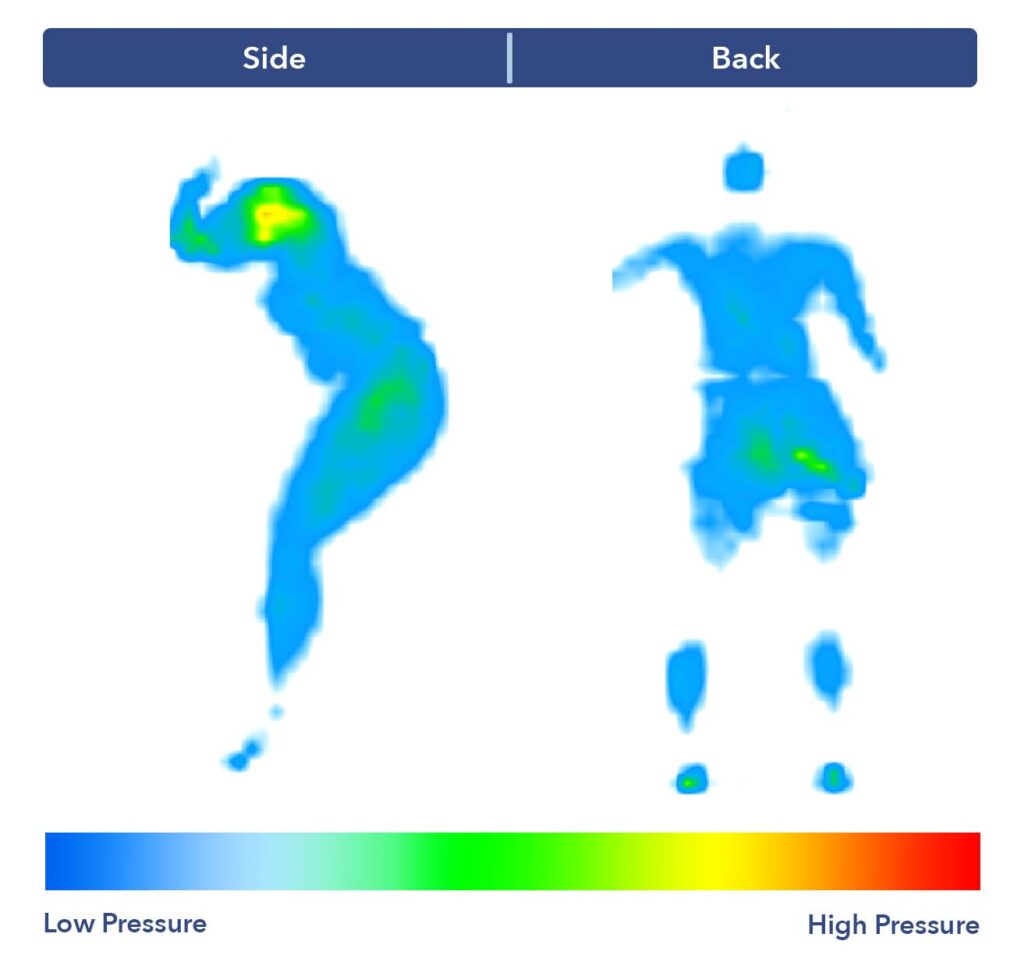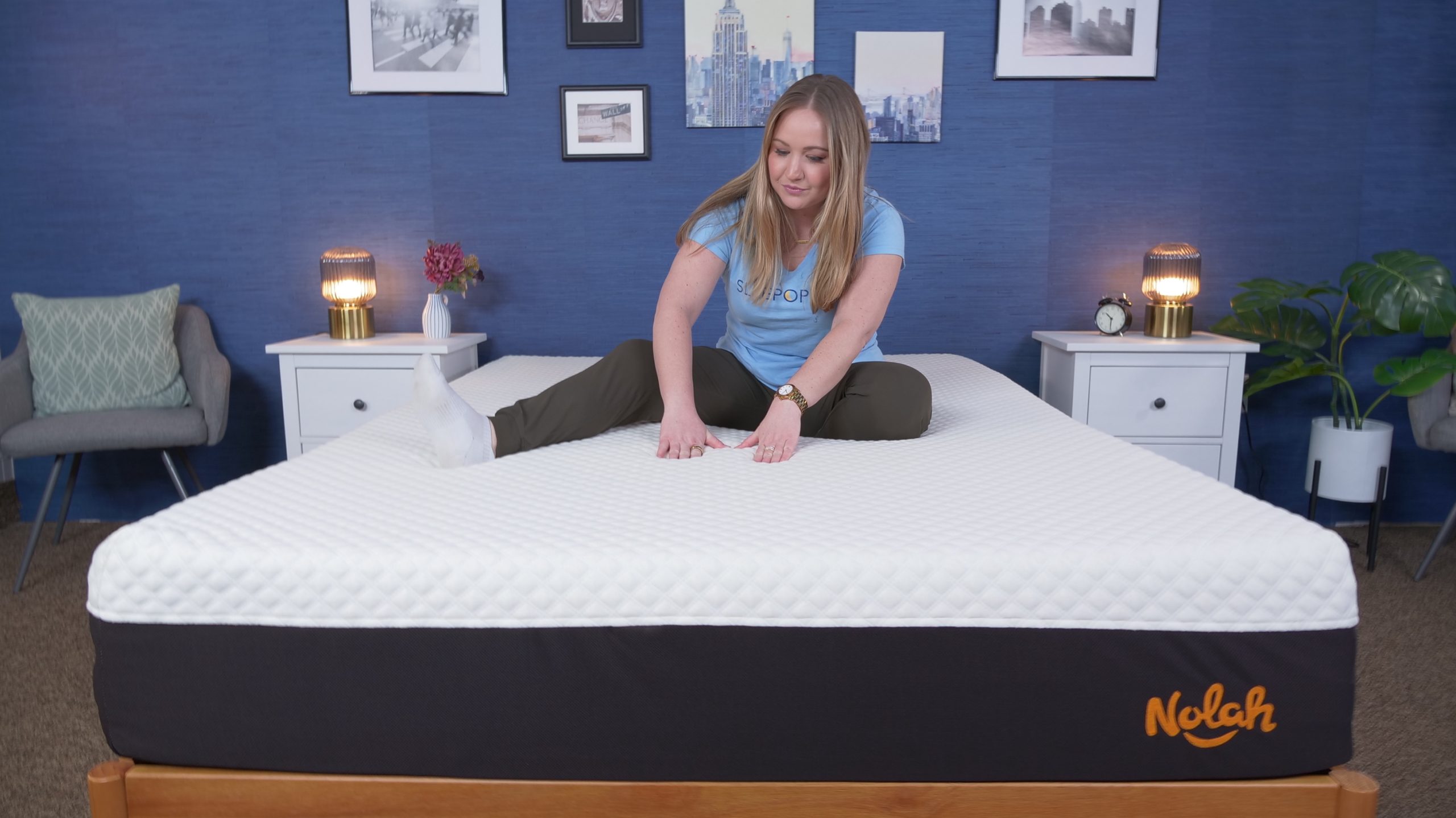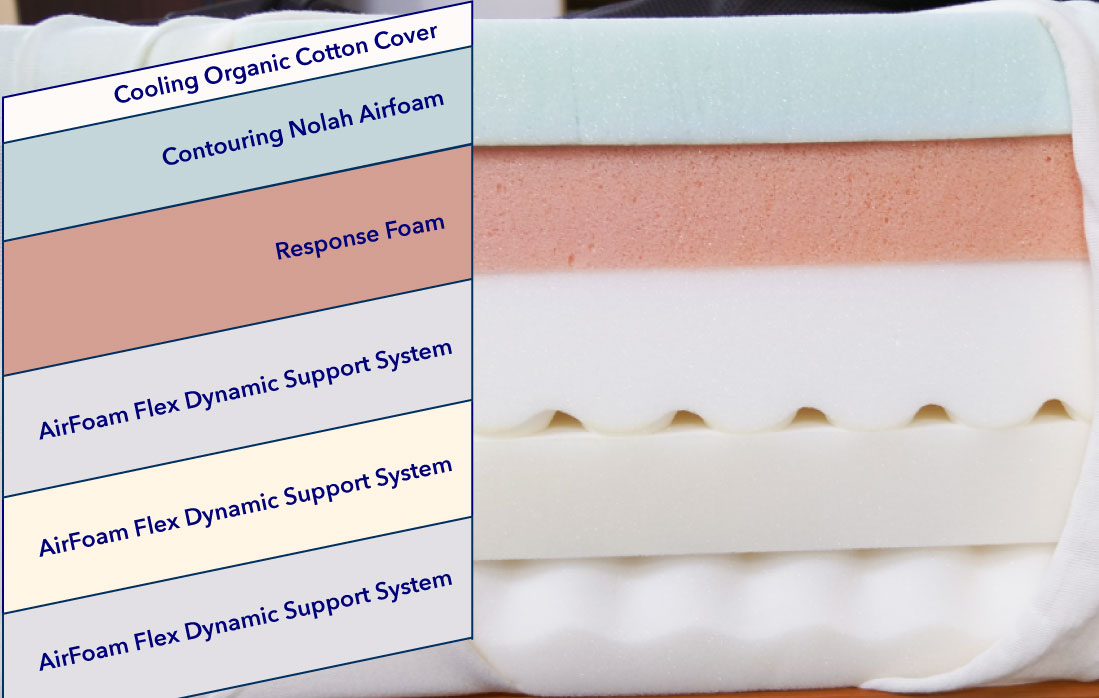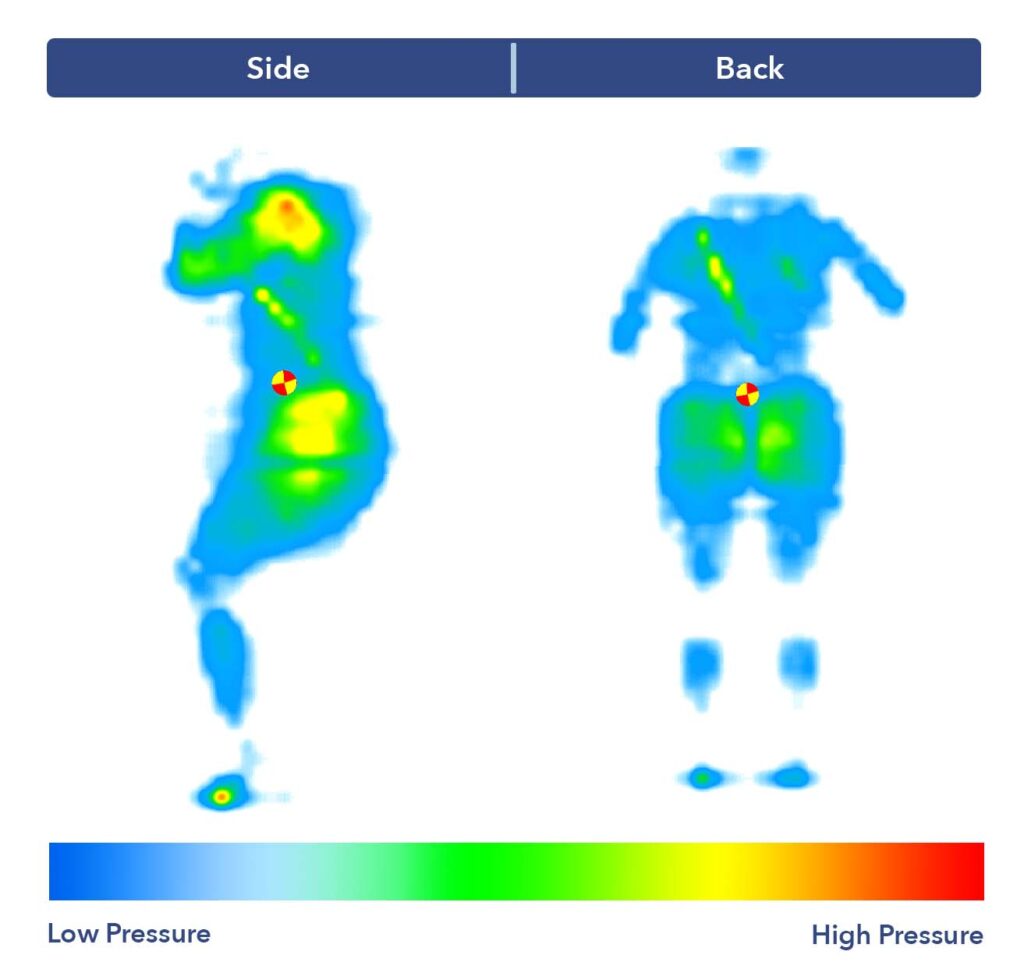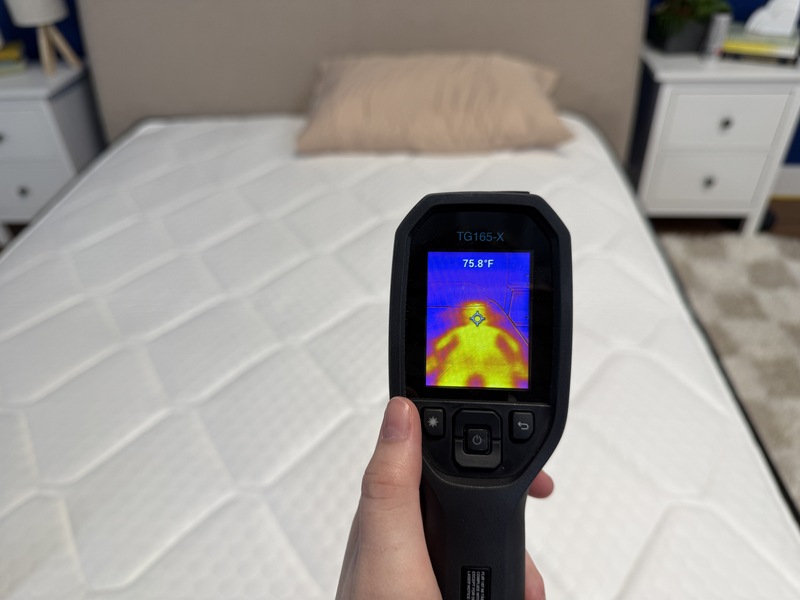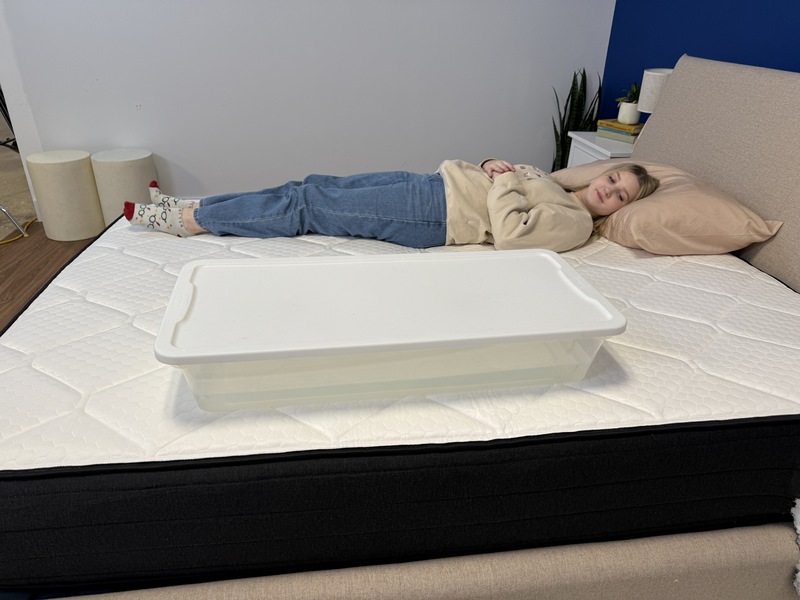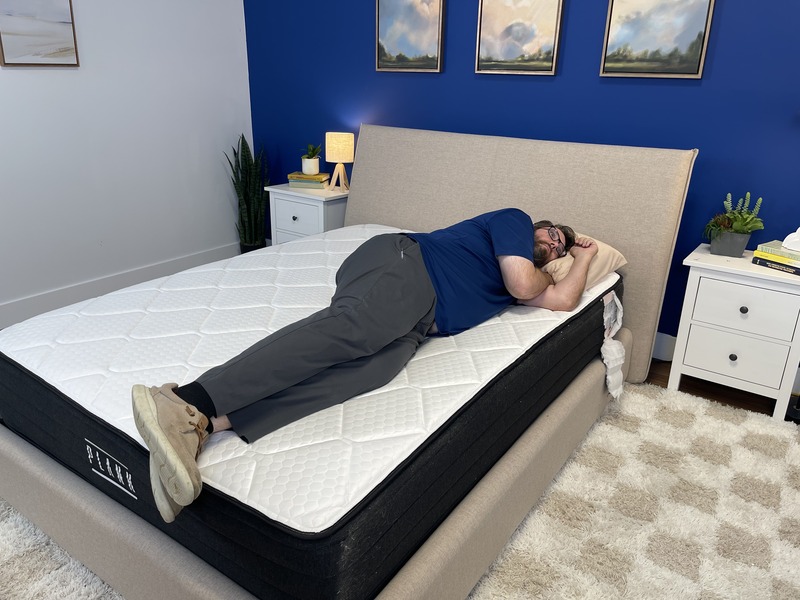Healthy sleep is a key part of overall well-being, but it can be elusive for those who suffer from back, hip, or other orthopedic pain. A mattress that properly supports your body can make a big difference in how well you sleep and how comfortable you feel throughout the night. According to Sleepopolis Chief Medical Product Tester Dr. Joe Tedesco, DPT, OCS, ATC, CSCS, the best mattress for joint pain will be supportive enough to keep the spine aligned while providing pressure relief at the hips and shoulders.
“For those with general joint pains, there should be enough softness to allow you to relax into the mattress, but it’s still supportive enough to give your joints the ability to rest after an active day,” Dr. Tedesco says.
With so many options available, finding the best orthopedic mattress may seem overwhelming. But it doesn’t have to be, because I’m here to guide you through the process. In this roundup, I’ve carefully selected my top picks for the best orthopedic mattresses of 2025, focusing on models that provide exceptional support and comfort.
Throughout this year, Sleepopolis has helped 12,544 people find the perfect mattress, and I’m here to help you too. The queen-sized mattresses featured in this list range from $1,300 to $2,300 before discounts, so you’ll find options that meet a variety of needs and budgets. Whether you’re seeking relief from chronic pain or simply want a better night’s sleep, this guide will help you find the perfect mattress for your specific needs.
Our Top Pick for Orthopedic Mattresses
The Helix Midnight ranks first on this list since it offers a balanced mix of pressure relief and support to help you maintain a healthy spinal alignment while sleeping. This is crucial when it comes to alleviating pain.
Best Orthopedic Mattress 2025
- Helix Midnight – Best Orthopedic Mattress for Side Sleepers
- DreamCloud Premier – Best Orthopedic Mattress for Kids
- WinkBed – Best Orthopedic Innerspring Mattress
- Saatva Memory Foam Hybrid – Best Orthopedic Mattress for Back Pain
- Bear Elite Hybrid – Best Orthopedic Mattress for Back Sleepers
- Brooklyn Bedding Aurora Luxe – Best Orthopedic Hybrid Mattress
- Nolah Signature – Best Orthopedic Mattress for the Money
- Plank Firm Luxe – Best Firm Orthopedic Mattress
What I Look For In The Best Orthopedic Mattresses
Support and Thickness
I know that one of your top priorities when looking for an orthopedic mattress is how supportive it is. Because of this, I made sure to pay special attention to how supportive and thick each of the mattresses on this list are. I did this by looking inside each mattress to examine the layers of foam or springs in each mattress, and find out more about the construction so you can be sure you are getting the most supportive and thick orthopedic mattress.
Motion Isolation
In addition to being sure the mattresses on this list are supportive and thick enough, I also tested for motion isolation to make sure you are getting a restful night’s sleep without being disturbed by movement in the bed. I performed tests for motion-isolating properties, which are our ball drop test where I measure the movement felt with a seismograph and our red wine test where I see if a glass of red wine tips when I move on the mattress.
Durability
When you are looking for a good orthopedic mattress, one thing you might be thinking about is how durable the mattress is. Because of this, I made sure to test for durable and quality materials in all of the mattresses on this list.
Comparing the Best Orthopedic Mattresses
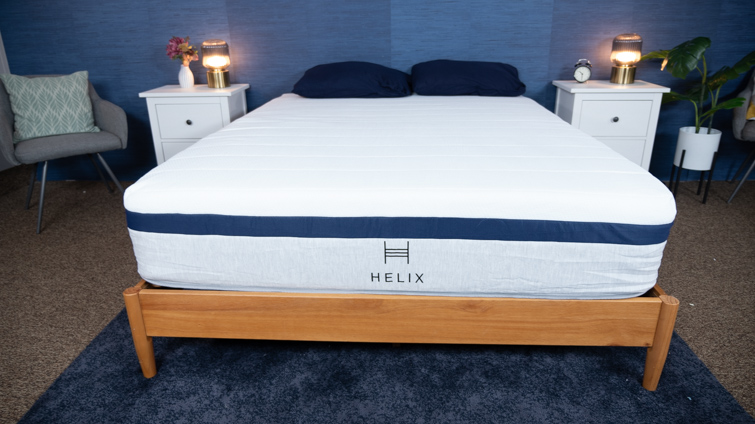
|

|

|
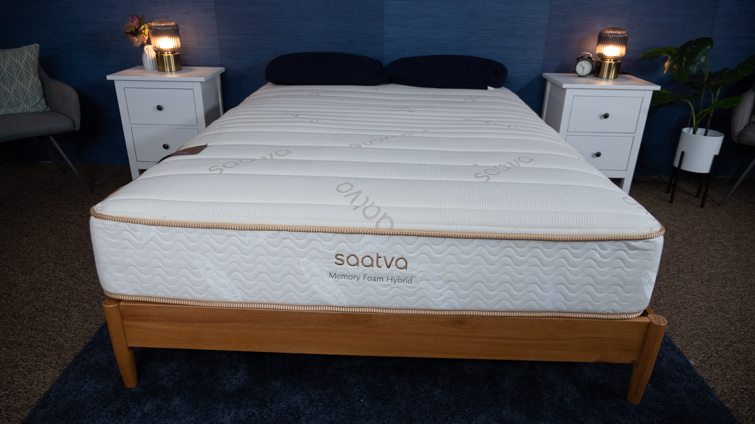
|
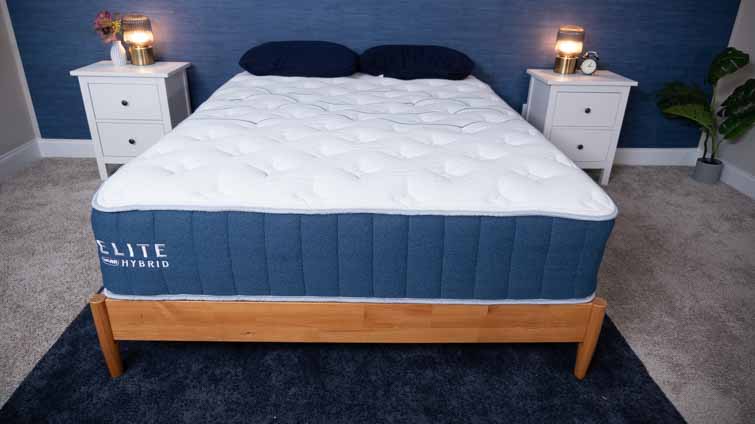
|

|
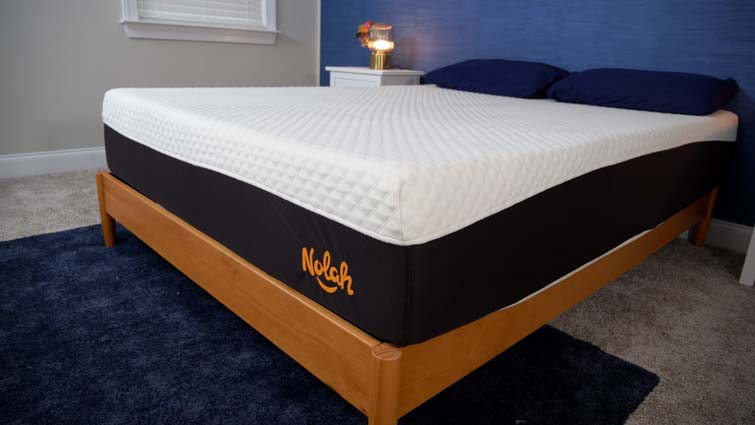
|
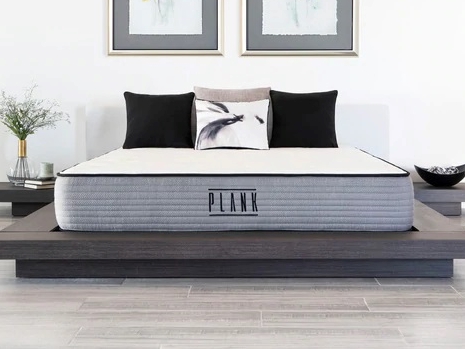
|
|
| Helix Midnight Mattress | DreamCloud Premier Mattress | WinkBed Mattress | Saatva Memory Foam Hybrid | Bear Elite Hybrid Mattress | Brooklyn Bedding Aurora Luxe Mattress | Nolah Signature 12″ Mattress | Brooklyn Bedding Plank Firm Luxe Mattress | |
| Rating | ||||||||
| Firmness | Medium-firm: 6.5/10 | Medium-soft: 6/10 | Firm: 7/10 | Medium-firm: 6.5/10 | Multiple firmness options | Multiple firmness options | Soft: 5.5/10 | Multiple firmness options |
| Material | Hybrid | Hybrid | Hybrid | Hybrid | Hybrid | Hybrid | Foam | Hybrid |
| Cooling | — | — | — | |||||
| Best For |
Side Sleepers,
Back Sleepers, Couples |
Back Sleepers,
Hot Sleepers |
Side Sleepers, Back Sleepers, Stomach Sleepers, Hot Sleepers, Back Pain
|
Back Sleepers,
Stomach Sleepers |
Side Sleepers, Back Sleepers, Hot Sleepers, Hip Pain, Seniors
|
Back Sleepers, Stomach Sleepers, Hot Sleepers, Back Pain, Couples
|
Side Sleepers,
Back Pain |
Side Sleepers, Back Sleepers, Stomach Sleepers, Hot Sleepers, Couples
|
Best Orthopedic Mattress Video Review
Helix Midnight – Best Orthopedic Mattress for Side Sleepers
The Helix Midnight is amongst Helix’s line of six standard mattresses. It’s known for its more balanced feel, allowing it to accommodate a wide range of sleepers. We also recommend it for couples, as it scored well on our motion isolation, responsiveness, edge support, and cooling tests. For a plusher and more cooling version of this mattress, see the Helix Midnight Luxe. Learn more in our video review.
What our tester says:
“I would recommend this mattress for side or back sleepers because it’s supportive, without putting pressure on your joints.” – Nichole Mondshein, lead reviewer and staff writer
Expert Opinion
Side sleepers who struggle with orthopedic pain should seek out a mattress that’s soft enough to relieve tension at their shoulders and hips, but supportive enough to keep their spine neutrally aligned. They should find this delicate balance in the Helix Midnight, a hybrid bed with a slightly softer feel. When I laid down on my side, I got a decent amount of contouring without ever feeling like I was going to sink too far into the mattress’ layers.
While resting on my side on top of the pressure map, I saw mostly blue and green appear on the device, with a bit of yellow at the hip and shoulder. This isn’t exactly surprising, as the hip and shoulder are the most common areas for pressure buildup while side sleeping. From these results, I think that most side sleepers should be comfortable, even folks with hip and shoulder pain. If you have super severe pain issues, it might be worth investing in a mattress topper or selecting a softer mattress.
DreamCloud Premier – Best Orthopedic Mattress for Kids
The DreamCloud Premier’s construction is a thoughtful, luxurious take on the company’s flagship mattress. It uses a hybrid of foam and coils to achieve a firmer feel that’s still pressure-relieving. We think many back sleepers and stomach sleepers should appreciate this mattress. With such versatility and many special features, the Premier is well-equipped to cater to couples. Learn more in our DreamCloud Premier video review.
What our tester says:
“From the cashmere cover to the Euro top, you’re getting a lot of bang for your buck with this bed. I really like how this mattress combines sturdy support with cozy pressure relief — making it a great choice for back sleepers.” – Bridget Chapman, former Sleepopolis senior product editor
Expert Opinion
As kids get older, their bodies constantly change, often resulting in growing pains. The hybrid DreamCloud Premier could be a good sleep remedy to this, as it combines several layers of foam (each with a different density and firmness) with a sturdy layer of individually wrapped coils. Children should get contouring from the top of the mattress, while also getting the stronger support they need from the springs as they grow. Each coil is individually wrapped, allowing them all to move independently and conform to your body. When I laid down on the bed’s surface, I could feel the coils adapting to the curve of my back.
Looking at our pressure map, I saw almost no pressure buildup in the back-sleeping position. This tells me that the DreamCloud Premier should be soft and pressure relieving enough to fill in the lumbar region and consequently ease back pain for many back sleepers. Stomach-sleeping kids should also be comfortable. However, I do think that young side sleepers with back pain will do better on a softer mattress, as they need additional pressure relief to ease the joints, specifically the shoulder and hip.
WinkBed – Best Orthopedic Innerspring Mattress
The WinkBed is a luxury hybrid mattress. It has a similarly supportive and sturdy feel to a traditional innerspring mattress, but upgrades like a Euro top and cooling Tencel cover give it a touch of modern luxury. Available in three firmness levels, there is a WinkBed for just about every sleeper. And a responsive and bouncy feel makes it a great pick for combination sleepers. Learn more in our video review.
What our tester says:
“If you like the feel of a traditional innerspring mattress, the WinkBed could work for you. Since this bed offered great pressure relief around my lumbar region, I’d also recommend it to folks who suffer from lower back pain.” – Nichole Mondshein, lead reviewer and staff writer
Expert Opinion
Innerspring mattresses tend to offer more support than other beds because they have so many coils. When I lie down on the WinkBed, for instance, I get a very “on-top-of-the-bed” feel from its springs. This is key to helping sleepers maintain a neutral spinal alignment, which can help address orthopedic pain throughout the body. The mattress is available in three different firmness levels: Softer, Luxury Firm, and Firmer. There’s also the WinkBed Plus, which is designed for sleepers over 250 pounds, although it is a bit more expensive.
To take our testing to the next level, I tried out the WinkBed’s edge support. By edge support, I mean the strength of a mattress’s perimeter. A bed with good edge support doesn’t cave in too much while sitting or lying down on the edges. This allows sleepers to maximize the mattress surface area, which is useful for keeping folks supported while sleeping toward the edge of the mattress. I found that the WinkBed has great edge support, as the perimeter of the mattress doesn’t collapse when sit on the end of the bed.
Saatva Memory Foam Hybrid – Best Orthopedic Mattress for Back Pain
The Saatva Memory Foam Hybrid gives sleepers an equal amount of contouring and support, thanks to its combination of soft foams and sturdy coils. Back sleepers are likely to be the most comfortable and should find that their spines stay neutrally aligned. Most side sleepers should also get the pressure relief they need. Finally, hot sleepers should also be happy on this bed due to all of its cooling features.
What our tester says:
“I really enjoyed how this mattress felt laying on my back and side. I was so comfortable and loved the medium-firm feel that had a touch of softness. I think the foam layers offered a contouring feeling while also making me feel supported. It’s also a very responsive bed, so it could be a great choice for combination sleepers.” – Bridget Chapman, former senior product editor
Expert Opinion
The best orthopedic mattress will cushion the joints while still being supportive enough to promote proper spinal alignment. With their Memory Foam Hybrid mattress, Saatva created a bed that has a little bit of everything. Up top, two layers of memory foam provide some plushness while keeping cool with infusions of gel. When I lie down on my back, I sink in just enough to get some pressure relief at the lumbar region. At same time, an extra-tall layer of coils at the bottom of the mattress keeps me lifted and supported. Sleepers with back pain should get the support they need to keep a healthy spinal alignment.
To show in real time how this mattress works with my body, I put the Saatva Memory Foam Hybrid through our pressure map test. This involves spreading a mat across the mattress surface. This mat tracks areas of high and low pressure using my body temperature, then uses thermal imaging to create a “map” of my body. On the map, it reflects heavier pressure buildup with red or orange, moderate pressure buildup with yellow, and little to no pressure with green and blue. In the case of the Saatva Memory Foam Hybrid, I found overall low pressure (mostly blue and some green) in the back- and side-sleeping positions. While side sleeping, there was a touch of yellow at the shoulder and hip, but I feel that those with joint pain should still be comfortable on this mattress.
Bear Elite Hybrid – Best Orthopedic Mattress for Back Sleepers
The Bear Elite Hybrid uses foam and coils for a mix of support, cushioning, and cooling. While designed for athletes prioritizing wellness and recovery, sleepers of all activity levels can enjoy the many luxurious features. Enjoy zoned support for targeted relief, an “on top of” feel allowing for ease of movement, and cooling features throughout. For more information, watch our video review.
What our tester says:
“I’d recommend the Bear Elite Hybrid for most back and stomach sleepers.I think these sleepers will get the needed pressure relief and contouring around the lower back and hips. This mattress does a wonderful job at offering body contouring while still helping the sleeper stay elevated and lifted as well. The layers of foam should provide comfort while the coil system should offer lots of support.” – Nichole Mondshein, lead reviewer and mattress tester
Expert Opinion
Bear designs their mattresses with athletes in mind, so the brand has a lot of experience with addressing orthopedic pain. I think the Bear Elite Hybrid could be a good match for any back sleepers who struggle with joint and back pain, as the bed has a layer of individually wrapped coils for spinal support and two layers of foam (one of which is zoned) for relief in the lumbar region. When Dr. Tedesco tried the mattress in the back-sleeping position, he said, “I feel pretty supported and even have a bit of a weightless feeling in my core.”
When I tested out the mattress, I got some contouring, along with a slight lift. Also, the pressure map showed all blue, meaning it put almost no pressure on my back whatsoever. I should also note that the bed is available in three different firmness levels: Soft, Medium, and Firm. I recommend Medium for back sleepers, but heavier sleepers might want to test out the firmest version for additional support.
Brooklyn Bedding Aurora Luxe – Best Orthopedic Hybrid Mattress
The Brookyn Bedding Aurora Luxe mattress is one of Brooklyn Bedding’s more high-end mattresses. It’s got a ton of cooling features in it that can help hot sleepers sleep cool all night. It’s also available in three different firmnesses, so it can accommodate all of the sleeping positions. For more information, check out our video review.
What our tester says:
“First and foremost, I’d recommend this mattress to hot sleepers. This bed sleeps nice and cool thanks to special phase change technology and gel infusions. The Aurora Luxe is also a nice pick for back sleepers. This mattress in the Medium model is medium-soft, so it should contour the hips while also lifting them into alignment.” – Nichole Mondshein, lead reviewer and staff writer
The Brooklyn Bedding Aurora Luxe is a hybrid mattress, meaning it combines cushioning foams with a support layer of pocketed coils. Overall, I found that the bed had a soft feel. When I tested it out, I felt myself sinking into the layers, getting a cuddly hug. I think this contouring could be especially helpful to sleepers who suffer from orthopedic hip and shoulder pain, as they tend to need a lot of pressure relief.
Dr Tedesco especially enjoyed the pillow-top layer, saying, “There is such great, even pressure distribution. I can feel everything sinking into the mattress just enough to feel comfortable, supported, and relaxed.”
In our mattress lab, I tested the Brooklyn Bedding Aurora Luxe’s Medium version. Our pressure map test showed almost entirely blue while I laid on my back. So, back sleepers with back pain or joint pain should receive plenty of pressure relief. While lying on my side, however, I did notice a bit more pressure buildup. The map showed a tinge of orange at the shoulder, and lots of yellow at the hip. So, while side sleepers who like a firmer feel should be alright, those who have joint pain or want more cushioning should opt for the Soft model.
Nolah Signature – Best Orthopedic Mattress for the Money
If you’re looking for a soft yet supportive foam option, the Nolah Signature should be a good fit. It’s supportive enough for back sleepers, while also providing enough contouring for side sleepers, especially at the shoulders and hips where the put the most pressure while sleeping. Learn more in our video review.
What our tester says:
“I think the Nolah Signature is a great choice for a lot of back and side sleepers. The sinkage this mattress provides should be a nice match for these sleepers and offer the pressure relief they need.” – Bridget Chapman, former senior product editor
Expert Opinion
Even though the Nolah Signature is made entirely of foam, it has four separate layers, all with different functions. For instance, the top layer of foam is designed for cooling and comfort, with each progressive layer getting firmer and firmer. The result is a soft mattress that still has enough support to keep your orthopedic pain from worsening. And despite the dynamic construction — which contains several proprietary materials — a queen size can often be found for under $1,200 after discounts.
When I tested out the Nolah Signature, I scored it a 5.5 out of 10 on our mattress firmness scale, and experienced plenty of contouring, as well as deep pressure relief. This is a plus for anyone who struggles with orthopedic pain, as they’ll want a bed that can adequately cushion their joints. Dr. Tedesco agrees. “People with shoulder pain will find they are very aligned, and they shouldn’t experience any pressure buildup,” he said. “If you have unstable shoulders, this could be great, because once you relax into the mattress, your shoulders will remain in place as the memory foam cradles and stabilizes the joints.”
Plank Firm Luxe – Best Firm Orthopedic Mattress
The Plank Firm Luxe is an upgraded model of Brooklyn Bedding’s original Plank Firm. Like the OG, the Luxe is a flippable mattress with both a firm and extra-firm side. However, this bed is a hybrid, meaning it has coils at the center. This gives it a leg up for bounce and support. It should work wonderfully for back sleepers, including those weighing more than 230 pounds.
What our tester says:
“I love this on my back. It’s firm enough to keep the spine completely straight, but it’s not too firm. I’m still getting comfort from the foam layers filling in my lower back, and there’s enough cushioning at my shoulder blades as well.” – Riley Otis, staff writer and certified sleep science coach
Expert Opinion
Maybe you’re a fan of firm mattresses and want to remain lifted on the surface of your bed, but you’re worried about exacerbating orthopedic pain. If so, you’ll want a mattress that’s on the firmer side but still offers some pressure relief and cushioning — and that just might be the Plank Firm Luxe.
This flippable mattress packs two firmnesses into one: a more traditional firm side and extra-firm side for your choosing. Regardless of which side you prefer, the result is a mattress with plenty of support, which can promote proper spinal alignment to stave off aches and pains along the back. Our testers most enjoyed the mattress while resting on their back, as it has that “on top” feel which won’t let you sink too far into the bed.
What’s an Orthopedic Mattress?
Defined by Merriam-Webster, orthopedics is “a branch of medicine concerned with the correction or prevention of deformities, disorders, or injuries of the skeleton and associated structures (such as tendons and ligaments)” (1).
So, an orthopedic mattress is simply one designed to alleviate symptoms of those musculoskeletal injuries. The trouble lies in the question: is there a true orthopedic mattress? And while I can’t confirm whether or not there are any reliably certified “official orthopedic mattresses,” there are mattresses I’ve tested that follow guidelines and suggestions approved by our Chief Medical Product Tester Dr. Joe Tedesco.
Orthopedic Mattress vs Normal Mattress
While I can’t endorse any of these beds as official orthopedic mattresses, there are some factors that separate what I consider to be a better mattress for orthopedic issues from a regular mattress. I believe the best orthopedic mattresses, including ones in this roundup, provide additional support for spinal alignment. They also offer sufficient pressure relief for any injuries or sensitive areas. But most importantly, I’ve hand-tested each of these factors in each of the mattresses featured in this roundup at our Sleepopolis mattress lab.
Should You Buy an Orthopedic Mattress?
This may seem like a fairly simple question with an obvious answer: get an orthopedic mattress if you’re having orthopedic issues, right? I’d like to argue that to some extent, everyone should have an orthopedic mattress, or at least one that represents the qualities I like to see in an orthopedic mattress.
Spinal alignment and musculoskeletal health are important for everyone, regardless of age and condition. However, a person with pre-existing issues might want to invest a little more in a mattress to really ensure they’re getting the most durable, best-quality materials. They should also consult with a doctor for guidance on best ways to manage their specific injuries, including recommendations for sleeping positions and additional strategies that may help, such as pillows or braces during sleep.
Do Orthopedic Mattresses Make a Difference?“Yes, I definitely recommend orthopedic mattresses for anyone with back, neck or joint pain. They can provide extra, firmer support and prioritize spinal alignment, which can reduce your pressure points longterm. They will not cure chronic conditions, however.” Dr. Raj Dasgupta, MD, FACP, FCCP, FAASM. Quadruple-board certified in pulmonary, sleep, internal, and critical care medicine
Dr. Raj Dasgupta, MD, FACP, FCCP, FAASM. Quadruple-board certified in pulmonary, sleep, internal, and critical care medicine
How I Test for the Best Orthopedic Mattress
When shopping for a mattress that can help maximize comfort, keep the following terms and information in mind:
Firmness
Firmness describes how a mattress feels when you lie down on it. A firmer mattress provides more pushback against the body and has a level sleeping surface. A softer mattress has increased sinkage and a plush feel. A medium-firm mattress offers a balance between pushback and cloud-like conformity. The best firmness level for you will depend on your sleeping position, personal preferences, and the type of orthopedic pain you experience.
I recommend looking at orthopedic mattresses that have a firmness level ranging from medium to firm, as this amount of firmness generally provides the support, cushioning, and relief you need.
How We Rate Firmness
Mattress firmness is rated on a 1 to 10 scale, with 1 being the softest and 10 being the firmest. The mattress industry standard for medium firm is 6.5.
Support and Edge Support
Firmness and support refer to different mattress characteristics. Firmness describes the degree of pushback and rigidity of the mattress surface, while support refers to structural features that help keep the spine aligned and the neck in a neutral position. These features typically include steel coils and/or foam layers.
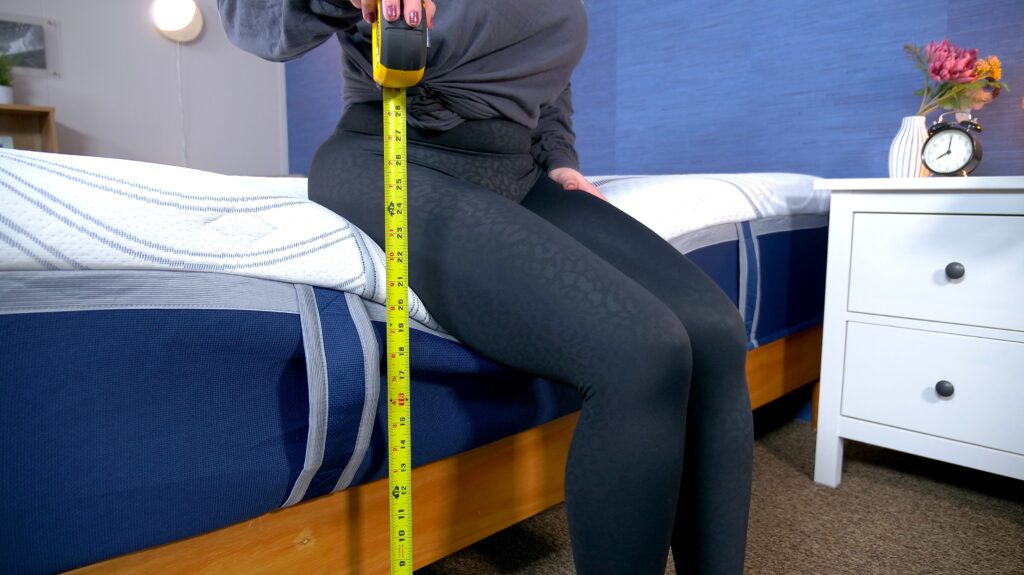
A supportive mattress also prevents excessive sinkage or “bottoming out” of the materials under body weight. One way I test for support is using edge support. I sit or lay at the end of the mattress and use a yard stick to measure how much sinkage I experience. Edge support is crucial for anyone who needs a little bit of extra support getting out of bed — seniors or someone with chronic pain, for example.
Orthopedic Beds and Pain Relief
Back Pain
Orthopedic mattresses can help with back pain by providing targeted support and maintaining proper spinal alignment. When searching for a back pain-friendly orthopedic mattress, prioritize features such as adequate firmness, pressure relief materials like memory foam or latex, and strong support to ensure proper spinal alignment and reduce discomfort.
Neck Pain
Orthopedic mattresses can definitely help alleviate neck pain by offering support that helps maintain proper spinal alignment and cushion for your shoulders, which reduces pressure on the neck. Look for a mattress that offers a medium-firm firmness level to keep your spine aligned, uses pressure-relieving materials like memory foam or latex, and provides contouring support to ease discomfort.
Hip Pain
Orthopedic mattresses can help alleviate hip pain by providing targeted support that reduces pressure and maintains proper alignment from their neck to their hips. For a mattress that addresses hip pain, look for features such as balanced firmness, durability, pressure-relieving materials like memory foam or latex, and cushioning support that contours to your hips to reduce discomfort.
Shoulder Pain
Orthopedic mattresses can help with shoulder pain by providing targeted support that cradles and supports the shoulders, reducing pressure points. When searching for a mattress for shoulder pain, prioritize features such as effective pressure relief, materials that contour to the shoulders, and hybrid or foam beds that offer both support and cushioning, especially if you’re a side sleeper.
Pressure Relief
Pressure relief refers to the ability of a mattress to alleviate tension in parts of the body like the shoulders, hips, and lower back. A mattress that provides pressure relief is especially important for people who sleep on their sides or have joint or neck issues.
Contouring foam comfort layers can be key to pressure relief, particularly if you suffer from orthopedic pain. If a mattress is too soft, it might not be supportive enough and can throw your spine out of alignment. However if a mattress is too firm, it can create extra pressure points and extra pain.

I measure pressure relief by using a test called a pressure map. I lay a specialized mat onto the mattress and lay in it in all sleep positions. The mat then transmits a color-coded graphic to a computer that shows how much pressure is being put on different areas of my body. As you can see in the picture, it gives me a good read of where each mattress will or won’t relieve the pressure you need it to. Blue and green means that the mattress has great pressure relief, and yellow and red spots are where you might feel like you sink too much with no support.
Contouring and Responsiveness
If you struggle with orthopedic pain, I recommend choosing a mattress with at least a little bit of sinkage and body contouring. Since you’re already dealing with aches and pains, the last thing you want is to place more pressure on those sensitive areas. A mattress with a medium feel can help cradle those problem spots and provide some pain relief. I also recommend choosing a mattress that has a bit of bounce, which can come from springy coils or buoyant foams like latex. This bounce can help prop your spine into neutral alignment and prevent you from sinking in too far, which could lead to pain. A mattress that’s both supportive and pressure relieving is likely the best choice for anyone with orthopedic issues.
Cooling
When suffering with orthopedic pain, it’s crucial that you find a mattress that will not only support you through the night, but will also keep you comfortable, and that includes temperature regulation. Many customers have found that when they’re too hot during the night, they don’t sleep well, as they are tossing and turning. I test for cooling using a thermal temperature gun on each mattress. Our testers lie on the mattress for a few minutes, and determine how fast the heat spreads through the bed before returning to its original temperature. As well as using our thermal gun results in each review, I recommend taking a close look at the mattress construction. Look out for gels, coils, and breathable materials to guarantee you stay cool throughout the night.

Orthopedic Pain and Sleep Positions
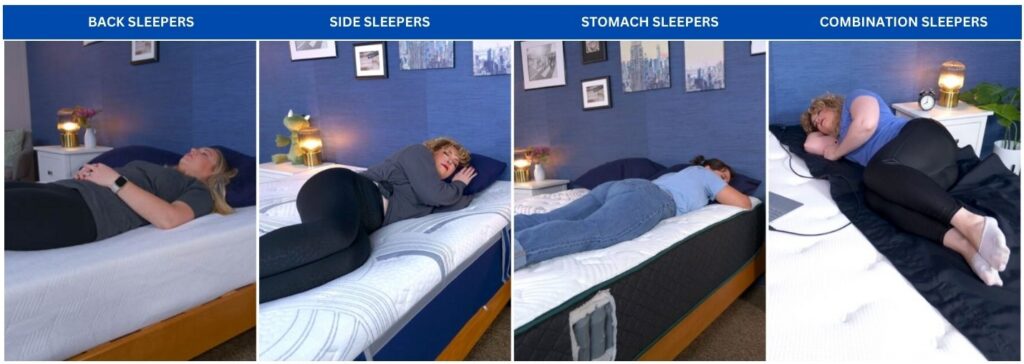
Now let’s look at another important part of choosing the right mattress: sleep position. Each sleep position has pros and cons that can impact spinal alignment and affect the health of the joints and spine. Let’s start with the most common of all the sleep positions.
Side Sleepers
Side sleeping is the most popular sleep position and may occur on either side. Some folks who sleep on their sides lie in a fetal-type position or with one or both legs down.
Pros:
- Sleeping on your side can prevent the tongue from falling into the throat, reducing the risk of snoring or obstructive sleep apnea. Left side sleeping can also reduce acid reflux by preventing acid from flowing into the esophagus.
Cons:
- Side sleeping can cause shoulder, arm, and/or hip pain due to pressure from the mattress and poor spinal alignment. Pressure on the jaw from sleeping on your side may result in jaw pain.
Mattress firmness is an important factor for side sleepers with orthopedic pain. A medium-soft mattress can provide pressure relief and prevent too much sinking. Larger-bodied folks who sleep on their sides may do best with a medium-firm mattress that prevents excessive sinkage and curvature of the spine.
Back Sleepers
Depending on certain circumstances, sleeping on the back is considered one of the healthiest sleeping positions. Back sleeping may be recommended for people with orthopedic conditions or after certain types of joint surgery.
Pros:
- Sleeping on the back keeps the neck and head in a neutral position and aligns the spine. Back sleeping also distributes body weight and minimizes tension on pressure points. Sleeping on the back can reduce pressure on the side and front of the hips, shoulders, and knees.
Cons:
- Back sleeping can cause the tongue to fall into the throat and increase the risk of snoring and obstructive sleep apnea. Also, some people find back sleeping uncomfortable, especially over long periods of time.
The right mattress for back sleepers with orthopedic pain is typically a medium-firm model that cushions the shoulders and hips and prevents gapping between the mattress and lower back. If you weigh more than 250 pounds, you may prefer a firmer mattress that prevents too much sinkage into the comfort layers.
Stomach Sleepers
Stomach sleeping can put stress on the neck and spine, and is generally considered the least-healthy of the sleep positions.
Pros:
- Sleeping on the stomach can keep the tongue from blocking the airway and lower the risk of snoring and sleep apnea. It may also help clear the lungs during respiratory infections.
Cons:
- Stomach sleeping can cause poor back alignment and lead to muscle and joint pain.
Stomach sleepers who experience orthopedic pain should consider a firmer mattress to support the spine and reduce sinking of the torso. Heavier stomach sleepers typically feel more comfortable on a very firm mattress that helps to maintain spinal alignment and decrease neck strain.
Mattress Types For Orthopedic Mattresses

Let’s look at the pros and cons of the most common types of mattresses. Most of them can easily be found in stores, online, and as bed-in-a-box models.
Memory Foam
Memory foam is a polyurethane foam that feels plush and conforms to the body. It’s available in a range of firmness options, from soft to extra-firm.
Pros:
- Memory foam absorbs motion and decreases the transfer of motion between partners who share a bed.
- It’s responsive to body heat and is known for its ability to relieve pressure on the joints. This can be helpful for folks who suffer from orthopedic pain, particularly side sleepers.
- Memory foam mattresses are one of the most popular mattress materials and are now one of the most affordable.
Cons:
- Memory foam mattresses that don’t include innerspring or pocketed coils may not provide adequate support for folks who weigh more than 250 pounds.
- Some forms of memory foam retain body heat and make sleeping uncomfortable. This is less likely with newer forms such as those infused with gel and copper.
- Less edge support can cause sloping or poor spinal alignment for folks who sleep close to the edge of the mattress.
Latex
Latex foam is made from the sap of the rubber tree. Latex is a natural product with a quick response to pressure and a bouncier feel than memory foam.
Pros:
- Latex’s open-celled structure makes for natural ventilation and cooler sleeping.
- The material can be a good choice for people who suffer from orthopedic pain and prefer natural materials.
- The natural buoyancy of latex can be helpful for stomach sleepers, who may sink too deeply into a memory or poly foam mattress.
- Latex comfort layers may be more supportive than memory or poly foam, and are a great option for heavier sleepers.
Cons:
- Latex is a natural material that requires harvesting. As a result, mattresses made from latex may be more expensive than memory or poly foam.
- Foam made from latex tends to transfer more motion between bed partners than memory foam.
- Latex doesn’t hug the body like memory foam, and may feel less comfortable to some sufferers of orthopedic pain.
Poly Foam
oly foam is made from polyurethane and has a quick response to pressure. The material is often used to support or complement memory foam or latex.
Pros:
- When used in a comfort layer, poly foam can offer pressure relief and cushioning for aching joints and muscles.
- The material can feel light and breathable, which may be a benefit for hot sleepers.
- Poly foam is often more affordable than other more durable mattress materials.
Cons:
- Less expensive poly foam can degrade quickly.
- Poly foam may have less of a responsive feel than memory foam, which conforms to the body and cradles joints.
Hybrid
Like an innerspring mattress, a hybrid utilizes a steel coil base for durability and structure, but adds memory foam, poly foam, and/or latex comfort layers for pressure relief and support. Innerspring mattresses are not typically recommended for folks who suffer from orthopedic pain, as they often sleep best on comfort layers that cushion the joints and muscles.
Pros:
- Hybrid mattresses contain pocketed coils, which are quieter and transfer less motion than traditional innersprings.
- The foam comfort layers of a hybrid can offer plush pressure relief for pain sufferers.
- Hybrid mattresses may be cooler than all-foam models and can be a good choice for folks who sleep warm.
Cons:
- The coil structure of a hybrid mattress may transfer motion, making it feel bouncier and disturbing to a bed partner.
- Hybrid mattresses may be heavier and more difficult to move.
- Less expensive hybrids may not be as durable as those made from pricier materials such as low-gauge steel coils and cooler memory foams.
What Mattress Certifications to Look Out For
When it comes to orthopedic mattresses, there are no official certifications to award. Some manufacturers may label their mattresses as orthopedic simply for marketing purposes, but this doesn’t guarantee they contain features designed for orthopedic support. However, I think each mattress on this roundup has qualities that promote proper spinal alignment. When it comes to finding orthopedic mattresses with quality materials, there are a few certifications to look out for.
- GREENGUARD certified mattresses meet some of the highest standards for reducing indoor air pollution and chemical exposure. These mattresses have limited volume organic compound (VOC) emissions to ensure they are safe for humans and their homes.
- CertiPUR-US certified foams are non-toxic and free from ozone depleters, heavy metals, formaldehyde, and other dangerous materials. These foams also have low VOC emissions for optimal indoor air quality.
- USDA Organic mattresses must have a minimum of 95 percent organic fiber content throughout the entire manufacturing process. This certification applies to agricultural materials, such as cotton, wool, and flax.
Company Policies
Sleep Trials
A sleep trial refers to the amount of time a brand will allow for you to test the mattress and allows to return it at no extra cost. While each brand varies, the most common I see are 30-day, 60-day, and 90-day sleep trials. This is especially important for sleepers experiencing orthopedic pain, as you want to have the flexibility to test the mattress in your own home to make sure it relieves the pain you experience.
Warranty
A mattress warranty refers to the amount of time in which a company is willing to replace your mattress if it “malfunctions” or doesn’t perform how it’s supposed to. This is extremely beneficial because it gives shoppers a general idea of how long the brand thinks the mattress will stay durable for. Each brand offers different warranties. However, I recommend looking at companies that offer a 10-year to lifetime warranty to get the most out of your mattress.
Shipping and Handling
A common drawback I hear from shoppers is the extra shipping fee you have to pay when buying a mattress online. I’ve made sure that each mattress I recommend here offers free shipping so you don’t have to work that into your budget. Some companies do offer white glove delivery at an extra cost which includes delivering your mattress, setting it up for you in your room, and even removing your old mattress. This service can be especially helpful for shoppers who don’t feel like they can carry the box upstairs or remove their old mattress.
Benefits & Drawbacks of Orthopedic Mattresses
Pros:
- Enhanced Support: Orthopedic mattresses are designed to provide targeted support to the spine, joints and pressure points, helping to maintain proper alignment and reduce back pain.
- Pressure Relief: These mattresses often feature materials, construction and design elements that relieve pressure points, which can alleviate discomfort and improve overall sleep quality.
- Durability: Typically made with high-quality materials, orthopedic mattresses are built to last and maintain their supportive properties over time, making them a long-term investment for better sleep health. I typically expect orthopedic mattresses to last up to 10 years.
Cons:
- Firmness: Orthopedic mattresses can be quite firm, which might not be comfortable for everyone, particularly those who prefer a softer sleeping surface. This mattress type is not suited for stomach or side sleepers who need a bit more cushion.
- Cost: Orthopedic beds are often more expensive due to the specialized materials and construction, making them a significant investment compared to standard mattresses.
- Limited Adjustability: Orthopedic mattresses may lack the flexibility of adjustable firmness settings or the ability to customize the sleep surface, which can be a drawback for those with changing comfort needs and those with already purchased adjustable beds.
Pain and Sleep
The Centers for Disease Control and Prevention (CDC) shares specific guidelines for sleep requirements by age. Adults, or people over 18 years old, should be shooting for a minimum of seven hours of sleep each night (2).
If you’re suffering from pain problems, it makes it all the more difficult to reach these seven hours of restful sleep. And consequently, this lack of sleep can worsen pain. That makes it all the more important to find the right mattress for your sleeping position, body weight, personal preferences, and health needs.
The relationship between pain and sleep is commonly referred to as bi-directional, or even cyclical. As a Neuropsychopharmacology journal in the National Library of Medicine suggests, “Pain can be both a cause and a consequence of sleep deficiency” (3).
For Specific Orthopedic Conditions
Here’s a quick list of some of our favorite roundups and guides pertaining to specific areas of bone and joint pain.
- Best Mattress for Back Pain
- Guide to a Better Sleep With Low Back Pain
- Best Mattress for Shoulder Pain
- Guide to a Better Sleep With Shoulder Pain
- Best Mattress for Hip Pain
- Guide to a Better Sleep With Hip Pain
- Best Mattress for Arthritis
- Guide to a Better Sleep With Arthritis
- Best Mattress for Seniors
Finding the Best Value Orthopedic Mattress
Average Orthopedic Mattress Price
Most mattresses are around $1,500 for a queen. However, mattress prices vary widely, as they come in a variety of constructions and with different materials. For a good orthopedic mattress, I recommend ensuring that you purchase a durable mattress that provides the right balance of comfort and support. More sensitive conditions might require a pricier mattress with better materials. So, I’d estimate that an outstanding mattress for orthopedic issues will probably sit around $1,500–$2,000.
For more information, check out our guide to find out how much you should spend on a mattress.
When to Buy a Mattress
There are typically sales going on for brands throughout most of the year. However, it’s around these holidays where the best price slashes take place:
- Presidents’ Day (February)
- Memorial Day (May)
- Labor Day (September)
- Cyber 5 (November)
- Christmas (December)
Coupons and Deals
If you’re ever wondering where you can find additional deals in the months between holiday sales, head on over to our Sleepopolis coupons page.
Best Orthopedic Mattress FAQs
What type of orthopedic mattress is best?
Every sleeper is different, but generally, a medium-firm orthopedic mattress is best for supporting proper spinal alignment and relieving pressure points.
Which is better, Memory foam or orthopedic mattresses?
It depends on personal preference. Memory foam cradles your body to provide extra cushioning and comfort, while orthopedic mattresses offer firmer support for alignment and pain relief.
What mattress type is best to avoid for chronic pain?
Generally, you should try to avoid soft mattresses or overly plush options that lack support. These beds may worsen chronic pain by causing misalignment.
What are the benefits of orthopedic mattresses?
The benefits of orthopedic mattresses include better support for spine alignment, less pressure around sensitive joints joints, and reduced back and neck pain.
Last Word From Sleepopolis
Orthopedic pain doesn’t have to keep you awake. Pressure relief and support are key factors to remember when shopping for a mattress, along with primary sleep position. No matter what your budget or preference of mattress material, you can find a durable mattress that helps to mitigate pain and provide a great night’s sleep.
How We Chose These Mattresses
Our team of Certified Sleep Science Coaches has reviewed more than 300 products in our mattress lab, running each one through tests such as pressure-mapping and measuring motion transfer with a seismometer. From there, we give every bed an overall score based on materials, comfort, support, cooling, and edge support. We also factor in brand performance with categories such as value and warranty.
For the mattresses featured on this list, we’ve given special consideration to pressure relief, support, and overall comfort. All of the products scored at least a 4 out of 5 in each of these categories. Click here to learn more about our methodology. And if you’re still not sure of the right mattress at the end of this article, you can take our mattress quiz to be shown a selection of mattresses curated to your sleep preferences.
Sources
- Orthopedics. Merriam-Webster. Accessed November 13, 2024. https://www.merriam-webster.com/dictionary/orthopedics.
- How Much Sleep Do I Need. Harvard Health. September 14, 2022. Accessed November 13, 2024. https://www.cdc.gov/sleep/about_sleep/how_much_sleep.html.
- Haack, M., Simpson, N., Sethna, N., Kaur, S., & Mullington, J. Sleep deficiency and chronic pain: potential underlying mechanisms and clinical implications. Harvard Health. June 17, 2019. Accessed November 13, 2024. https://www.ncbi.nlm.nih.gov/pmc/articles/PMC6879497/.

Logan Block
Former Content Director
About Author
Logan is the former content director of Sleepopolis. As content director, he reviewed new mattresses every week and curated the comparisons, best of pages, and video guides on the site. Logan perfected his method by personally testing over 200 different mattresses, so he’s not only able to discern the overall vibe of a specific bed, but to contextualize its feel within the bed-in-a-box market as a whole.
Back Sleeper






























